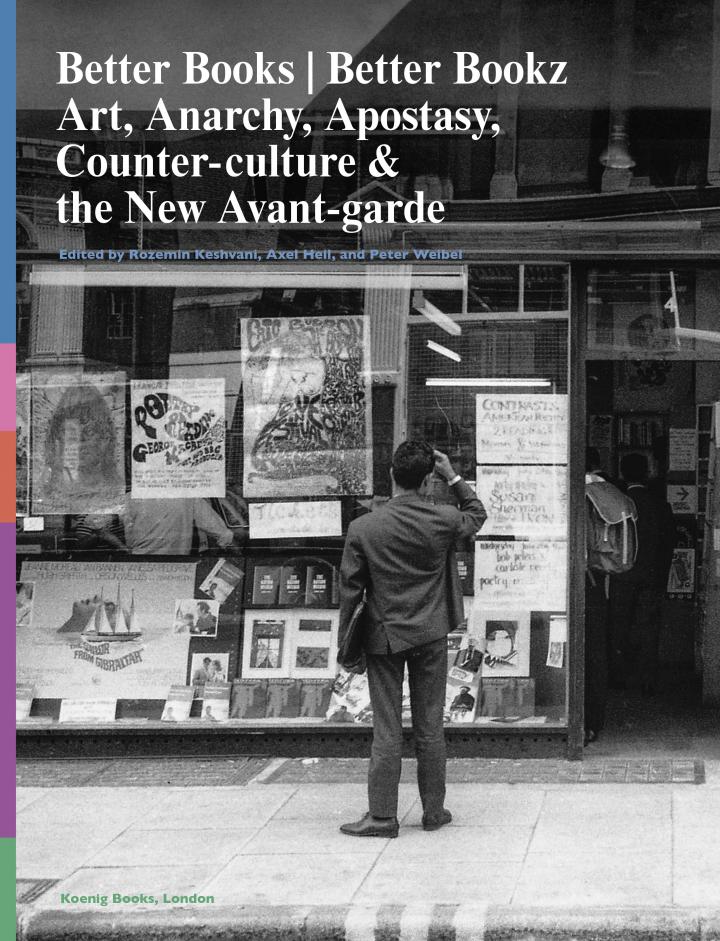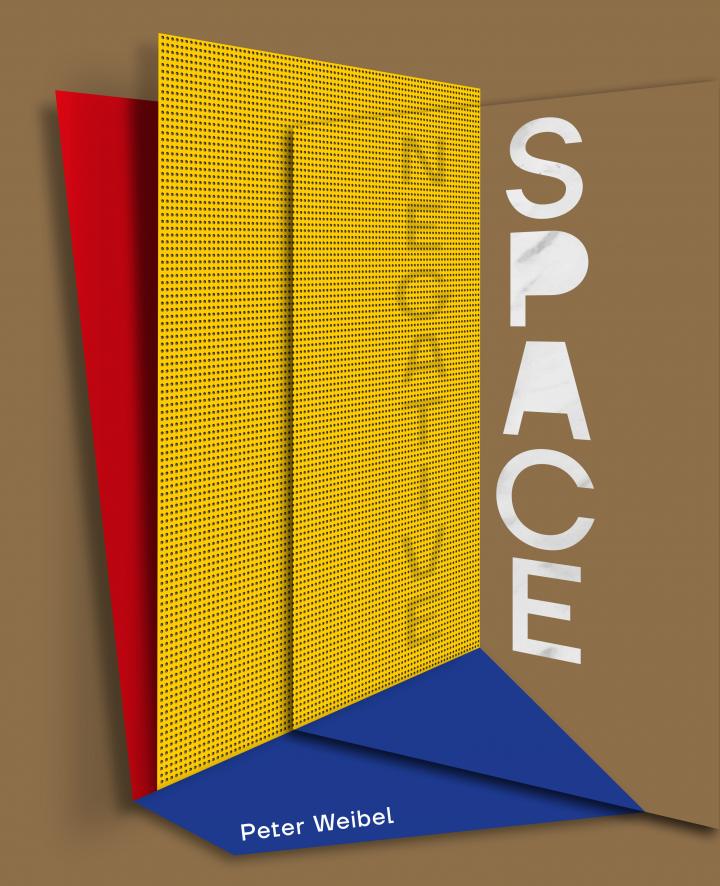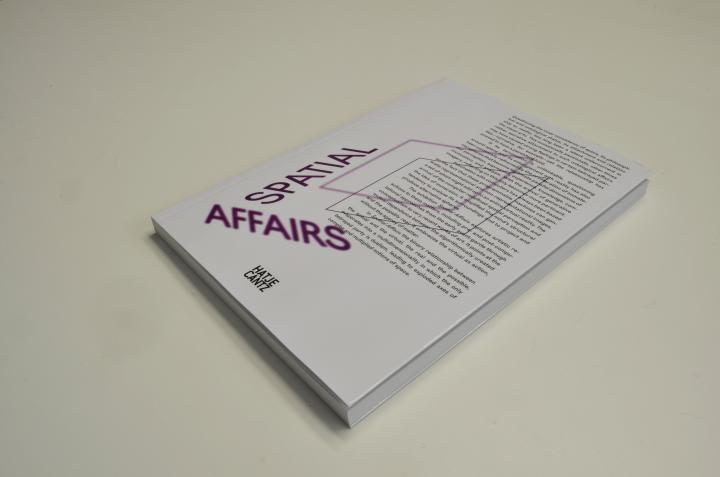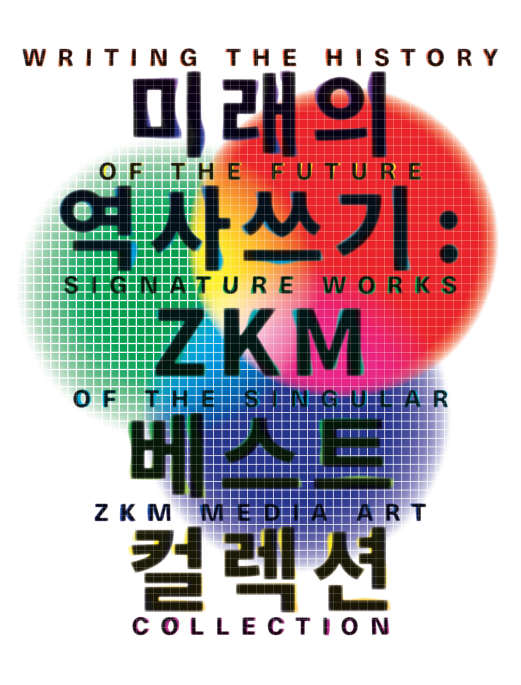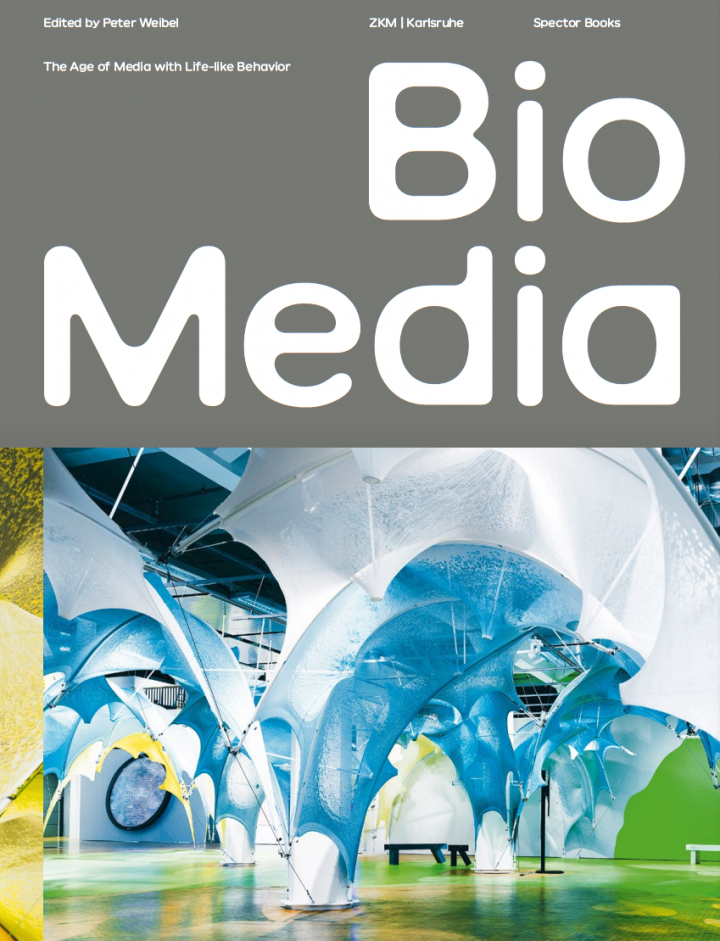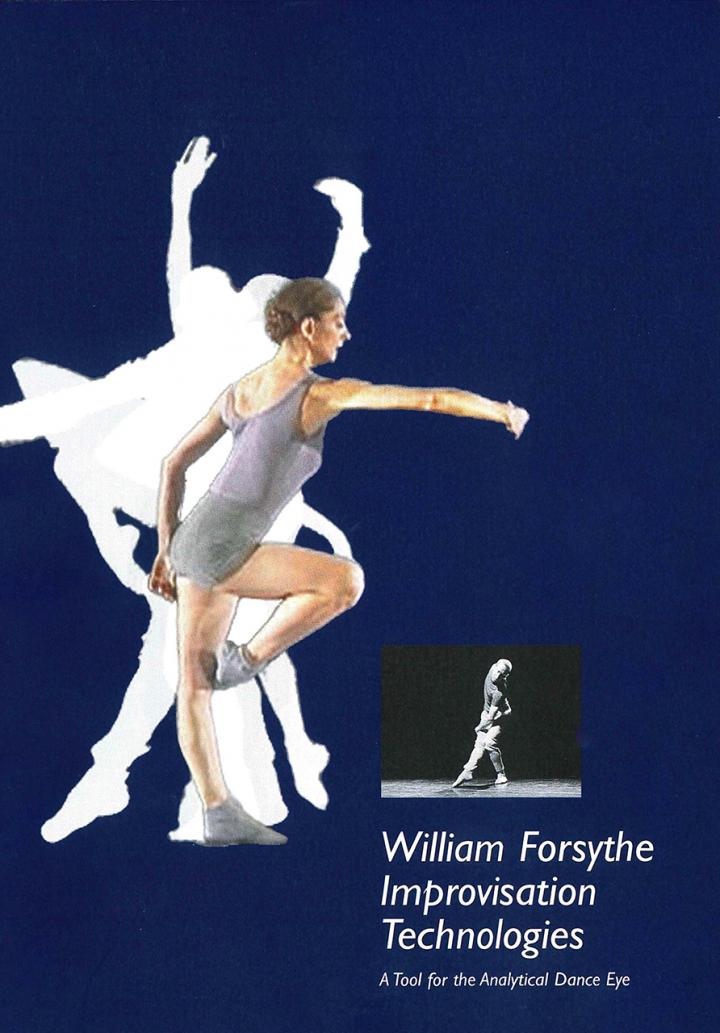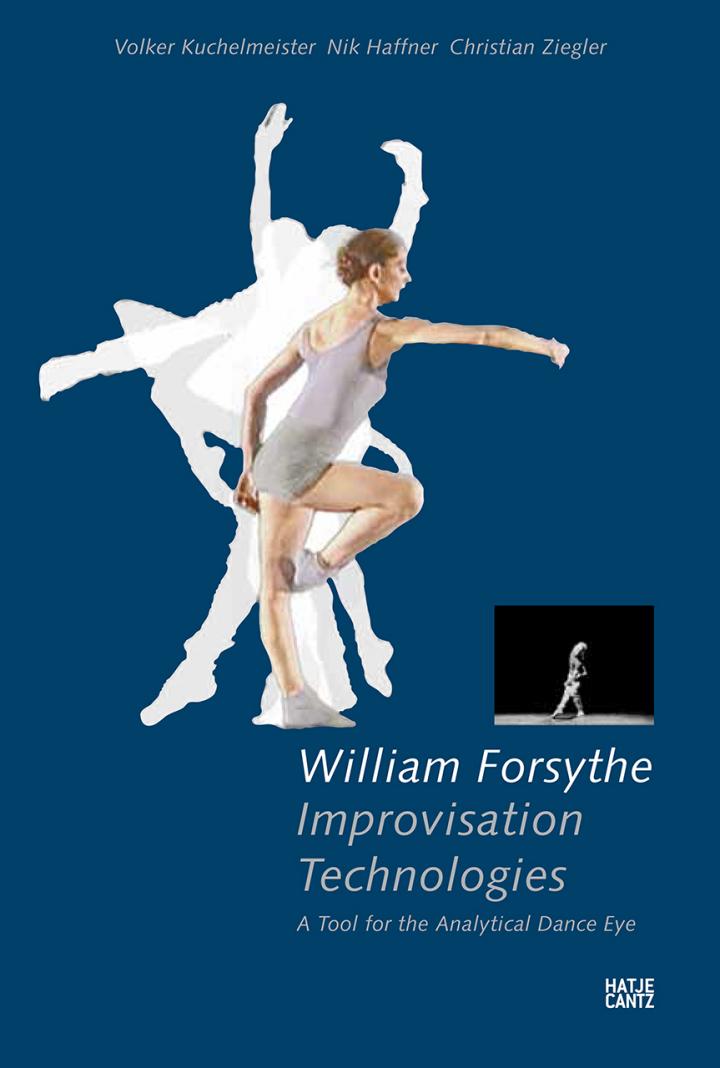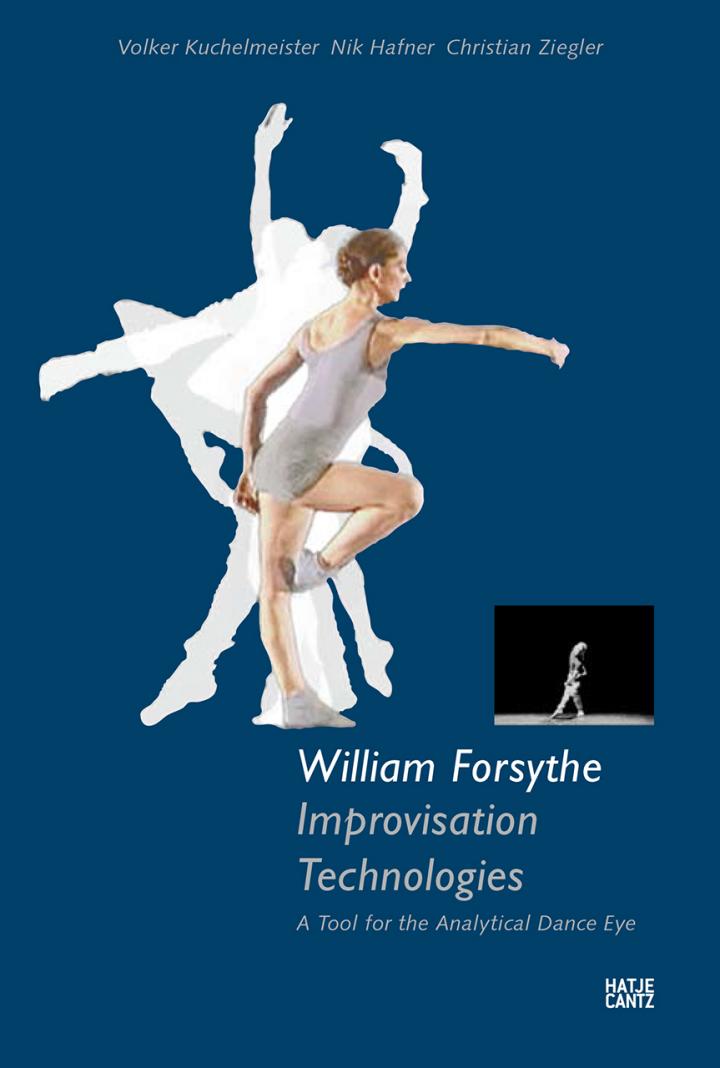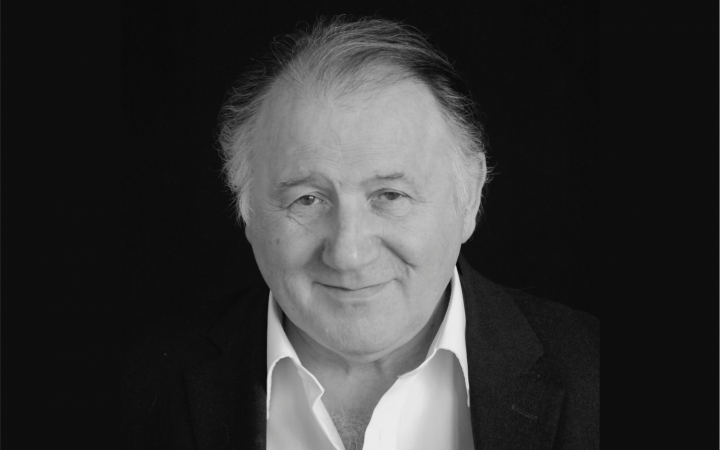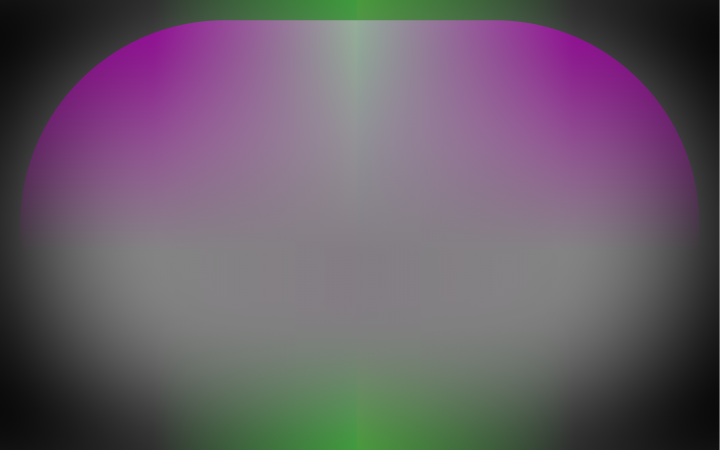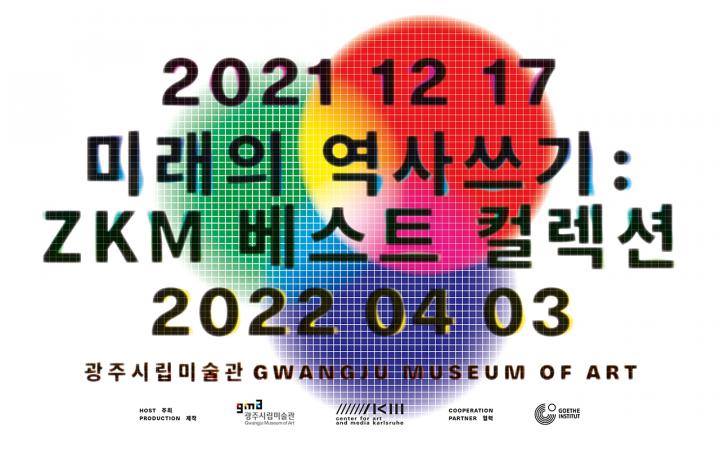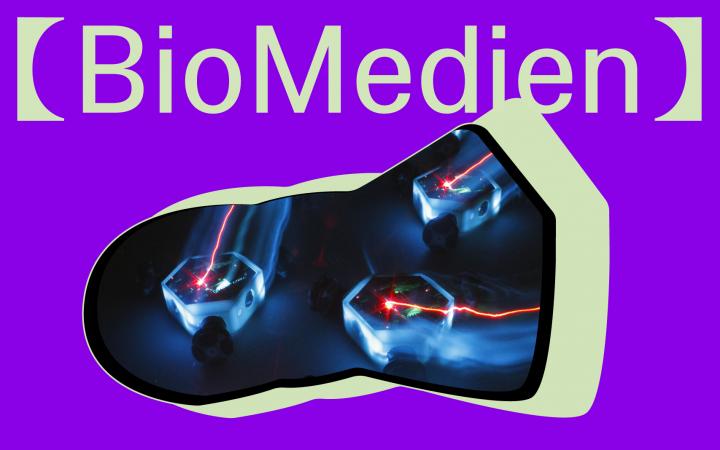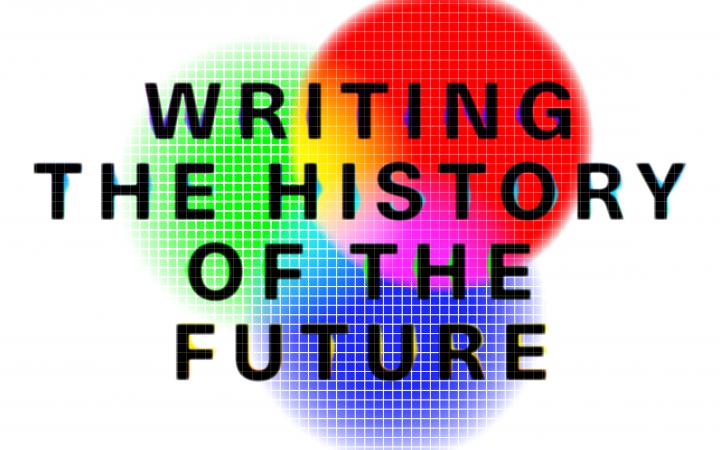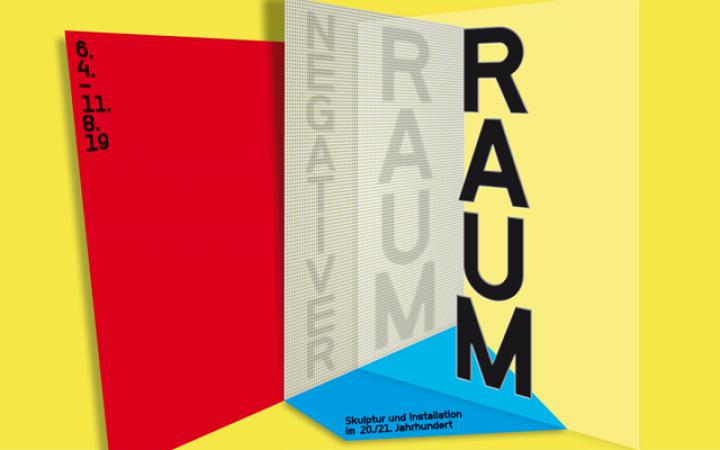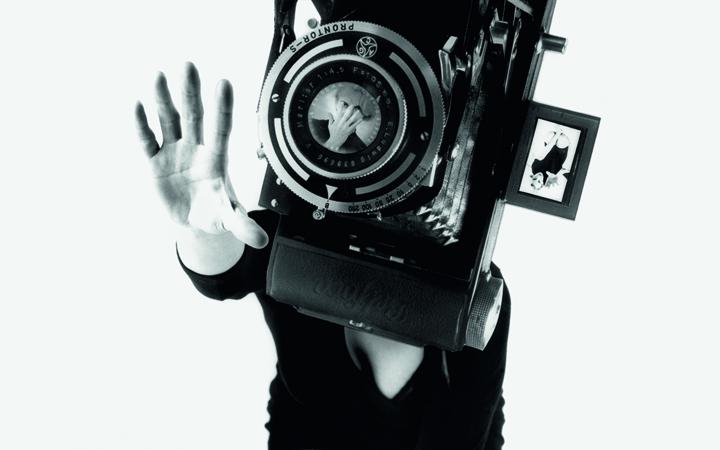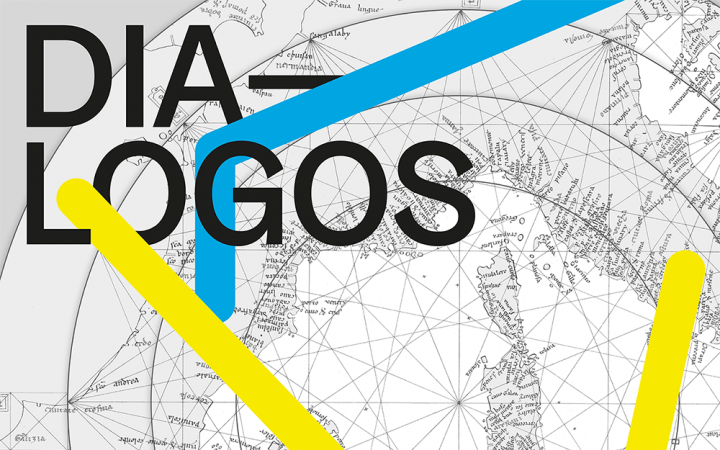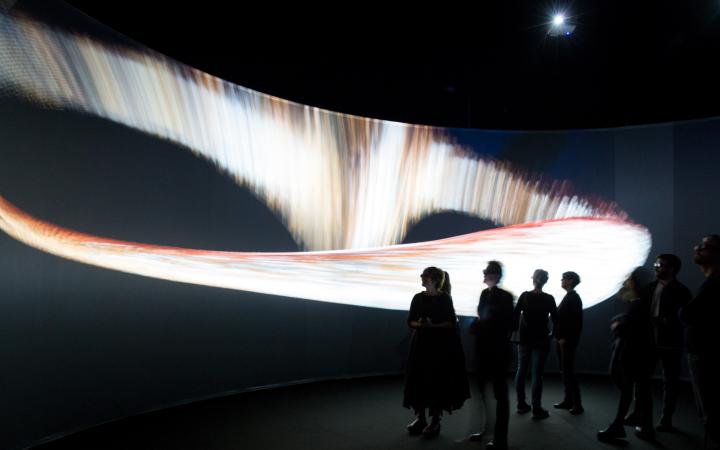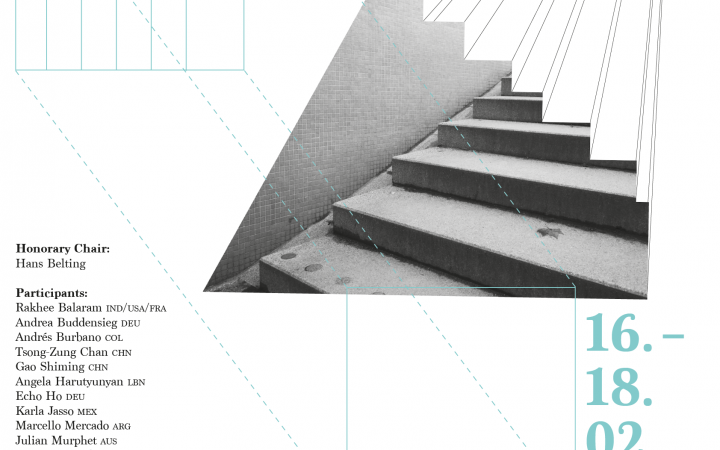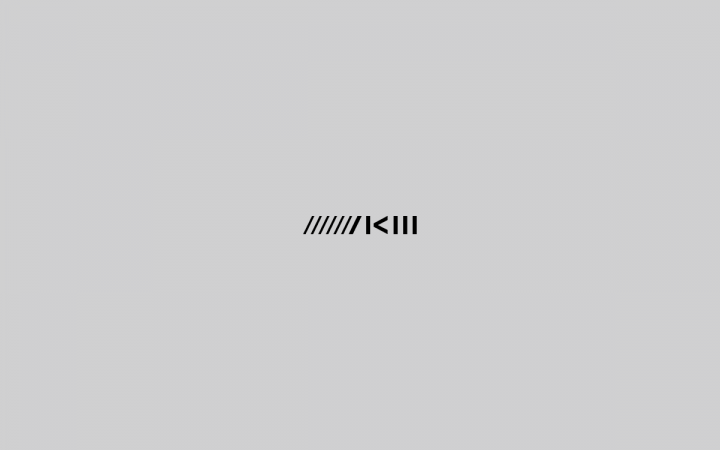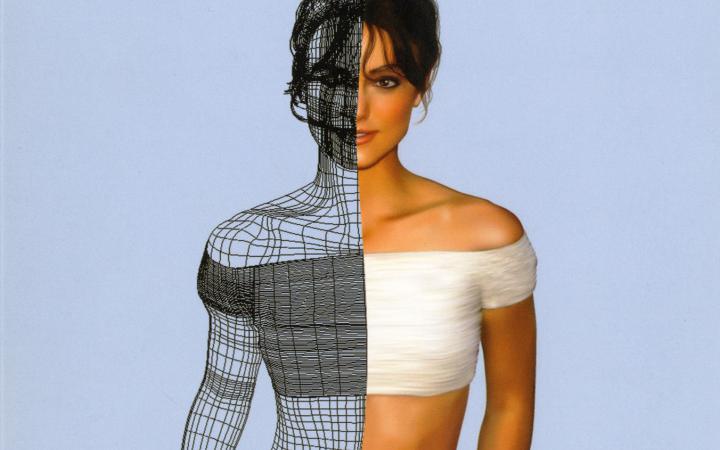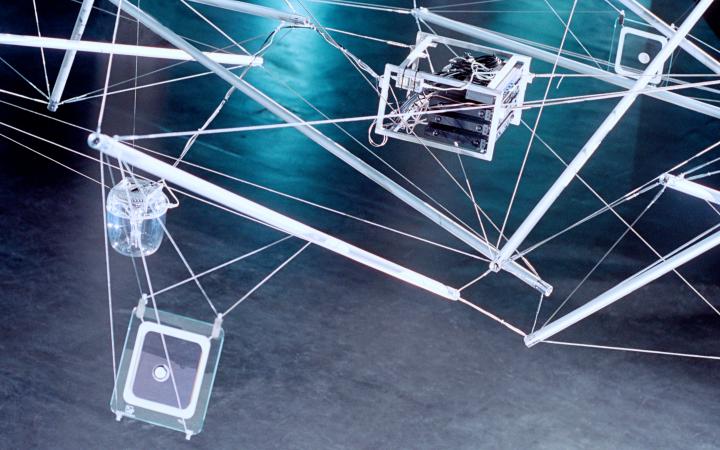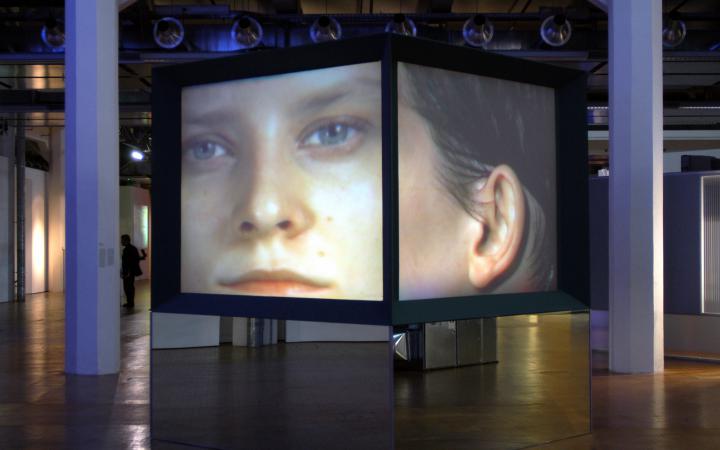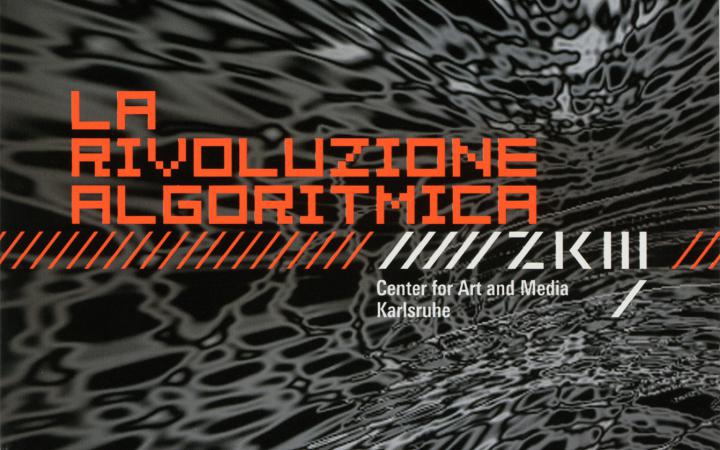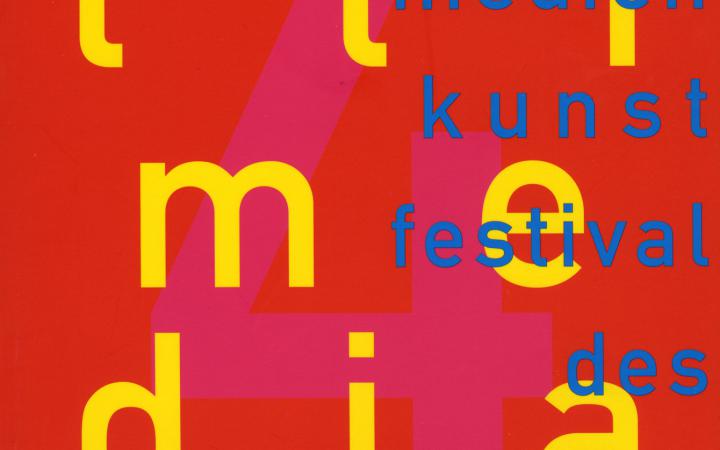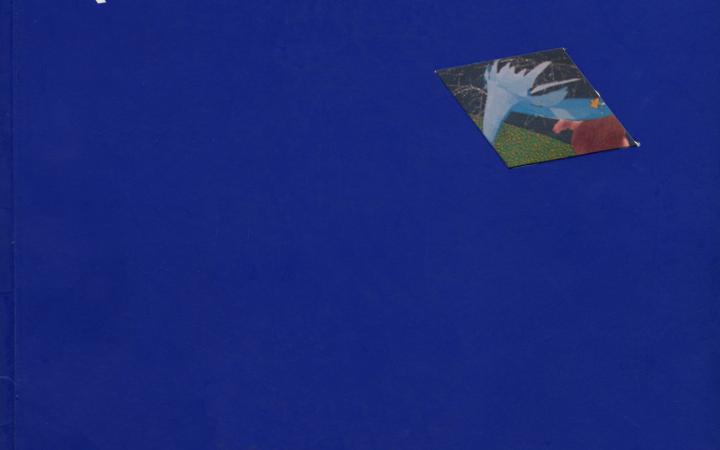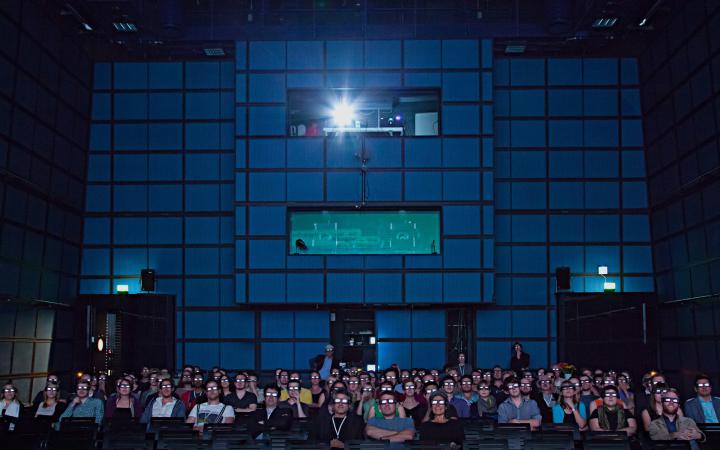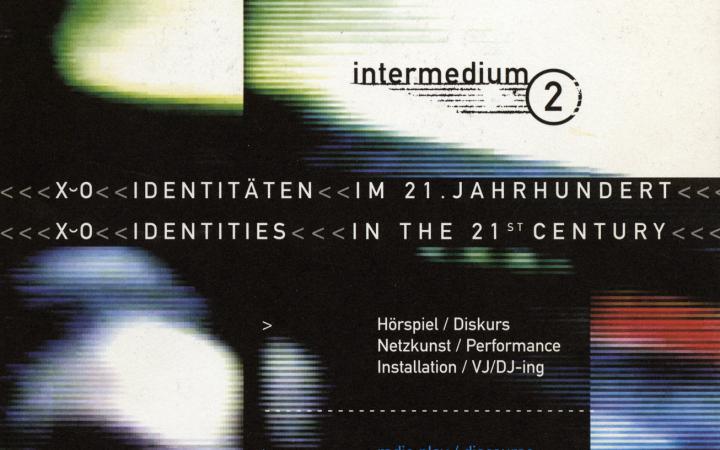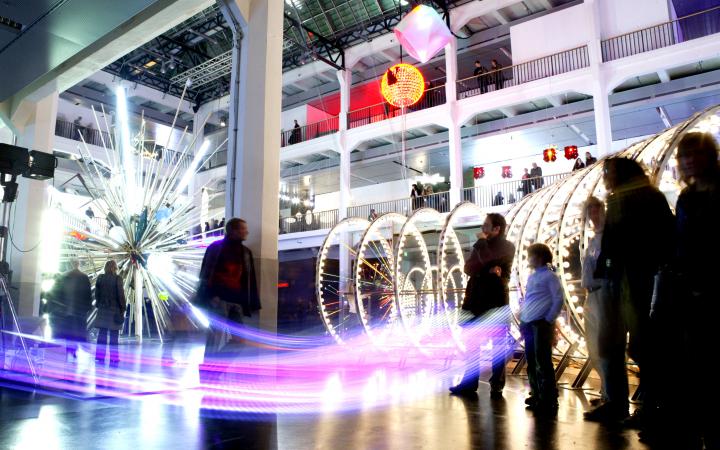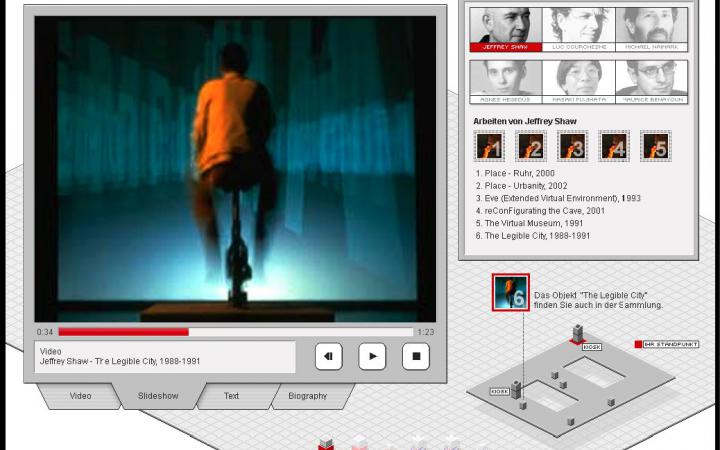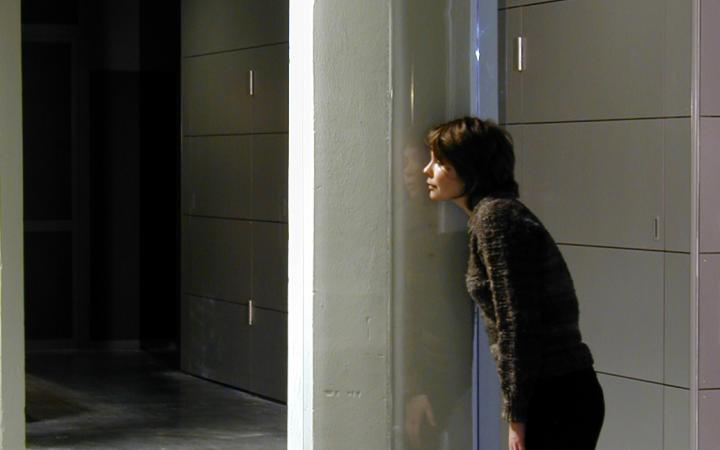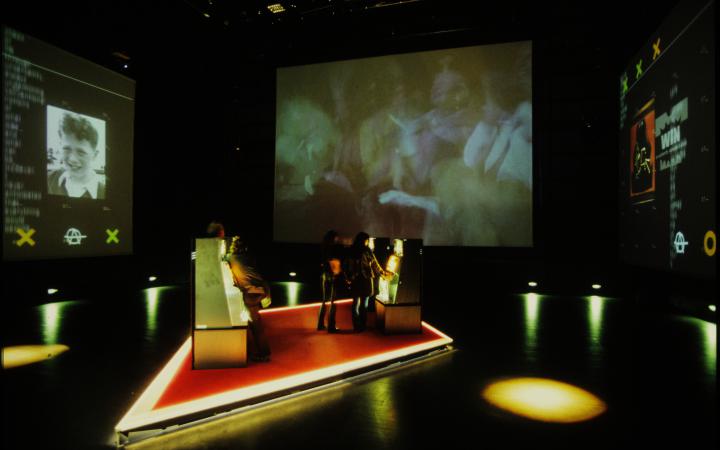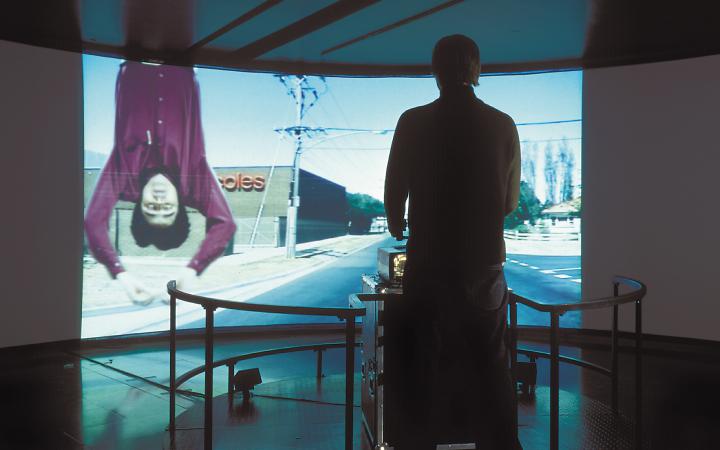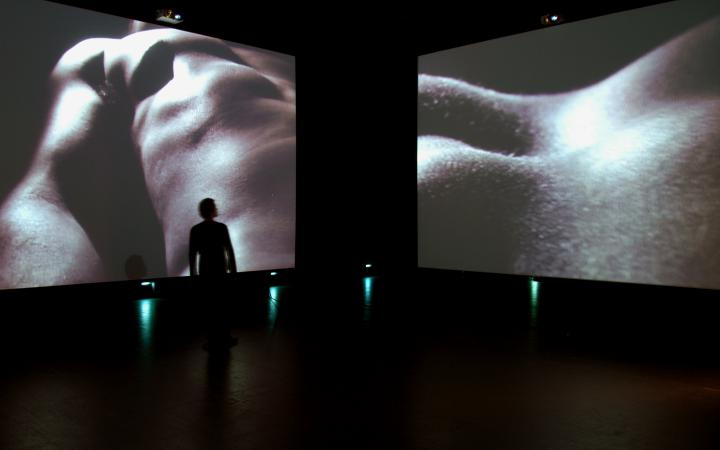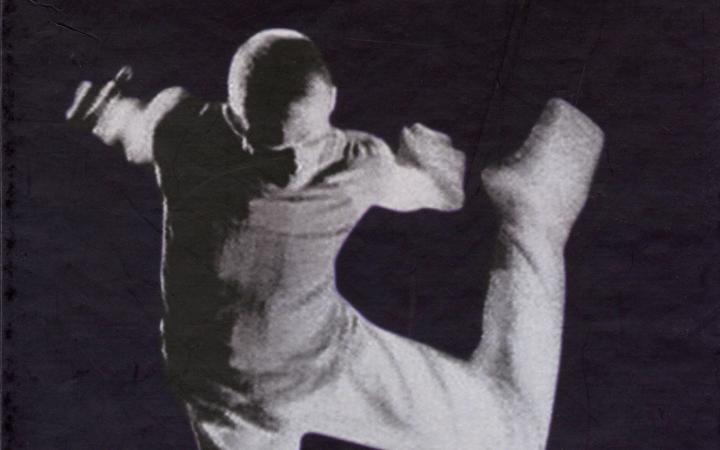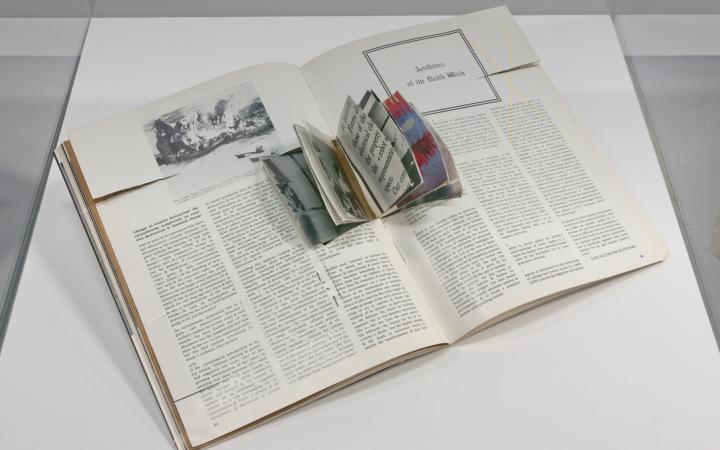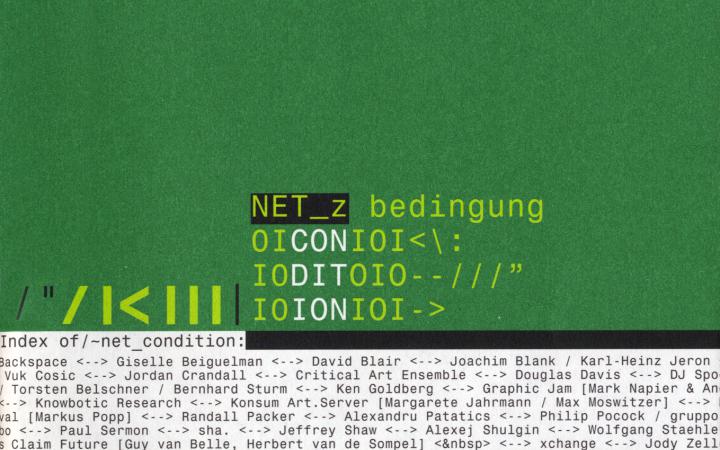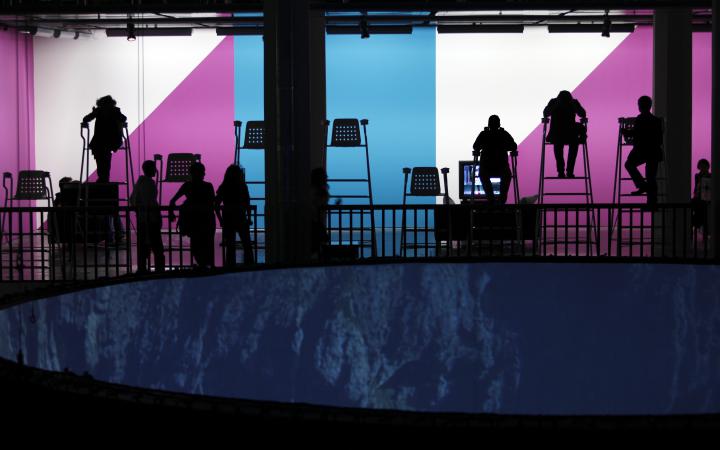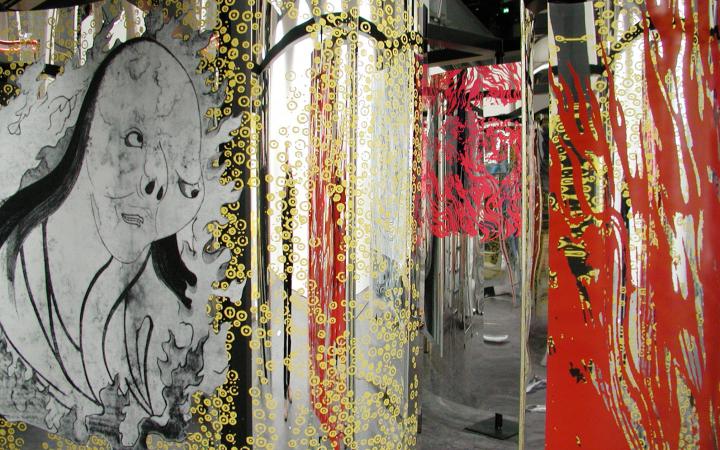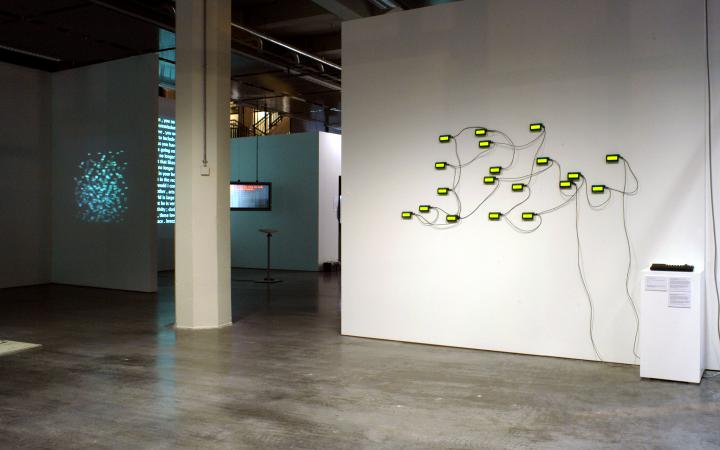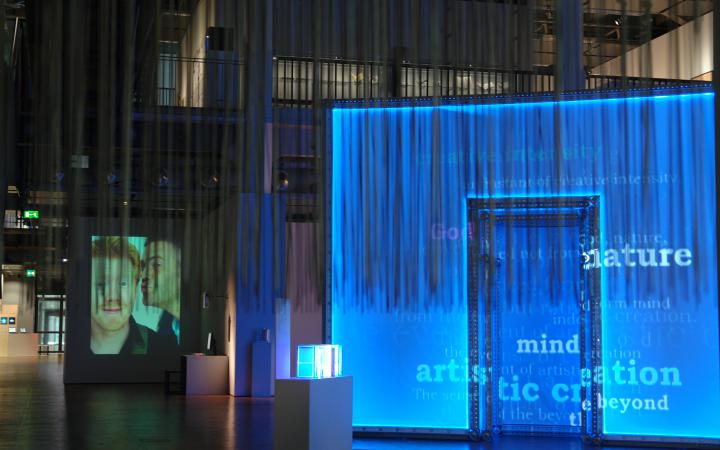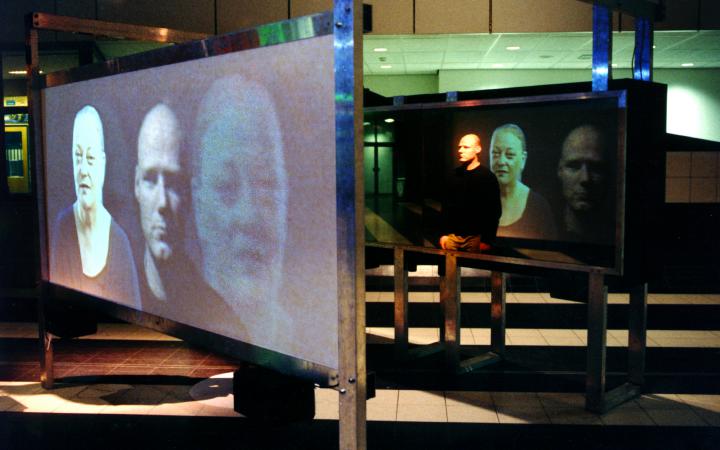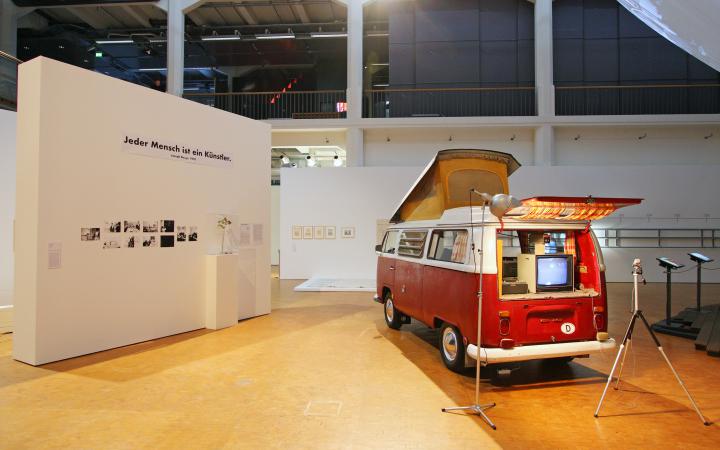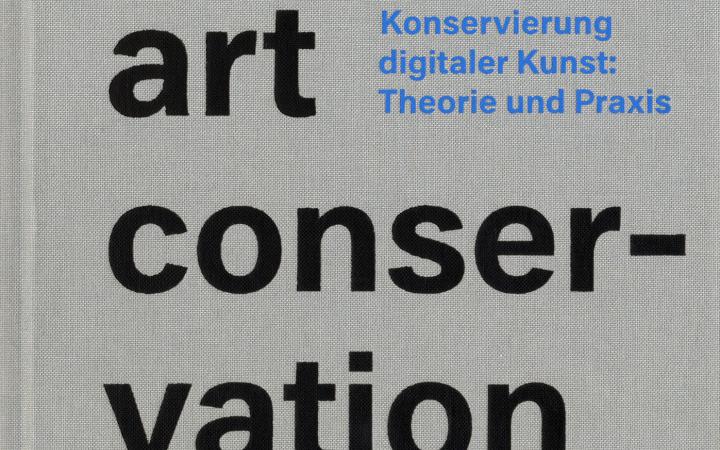- Collection & Archives
- People
- Jeffrey Shaw
Jeffrey Shaw
- Year of birth, place
- 1944, Melbourne, Australia
- lives and works in
- Hongkong, People's Republic of China
- Role at the ZKM
- in the collection
- Institute / Department
- Institute for Visual Media
- At the ZKM
1991–2003 Leiter des Instituts für Bildmedien
- Biography
- Jeffrey Shaw was born in Melbourne in 1944. From 1962 to 1964 he studied Architecture and Art History at the University of Melbourne. In 1965 he travelled to Europe and studied Sculpture, initially at the Accademia di Belle Arti di Brera, Milan, then, from 1966, at Saint Martin's School of Art, London. In 1967, together with Theo Botschujver and Sean Wellesley-Miller, he established the Event Structure Research Group (ERG), which existed until 1979. Since the late 1960s Shaw has lived in London and Amsterdam, until the late 1980s spending most of his time in Holland. He has held teaching positions at the Academie van Beeldende Kunsten, Rotterdam and at the Gerrit Rietveld Academie, Amsterdam; and in 1991 he became Director of the Institute for Visual Media at the Zentrum für Kunst und Medientechnologie Karlsruhe. Since 1995 Shaw has been Professor of Media Art at the Staatliche Hochschule für Gestaltung, Karlsruhe. He has received numerous awards for his work, including the prize awarded at the Ferrara festival L'Immagine Elettronica (1990), and the 'Prix Ars Electronica' (also 1990). Shaw lives in Karlsruhe.
Shaw was one of the first artists to engage with participatory, interactive and computer-controlled forms of media art. He is regarded as one of the leading exponents of computer art. As early as the 1960s he embarked upon projects relating to Expanded Cinema: during performance pieces images were projected on to unstable or mobile surfaces such as steam, smoke or the bodies of spectators. This permitted the emergence of new, kinetically determined relationships between spaces and images. Dynamic, architectonic spaces have remained of importance in Shaw's work. During the 1970s his »inflatables« - inflatable rooms made of transparent plastic sheeting - were followed by light spaces for laser projection, then light shows for rock concerts, and finally video installations and computer images projected, in real time, into a setting that altered in relation to the movement of the spectator. Characteristic of Shaw's method of working is his commitment to dialogue and co-operation, not only with other artists and with relevant technical experts but also with the public. Shaw's best-known works include »Inventer la Terre« (Inventing the World, 1986), »The Legible City« (1988-91) and »The Golden Calf« (1995); and his latest - »Place - a user's manual« (1997) - combines elements of panorama with painting, photography and texts to create a virtual space that entirely surrounds the visitor.
Individual and group exhibitions
1968 »Structures Gonflables«, Musée d'Art Moderne de la Ville de Paris; »50 Jahre Kunsthalle Bern«, Kornhauskeller, Berne
1969 »4th International Experimental Film-Festival«, Knokke-le-Zoute; »Kinetische Objektshow«, Frans-Hals-Museum, Haarlem; »Art After Plans«, Kunsthalle, Berne
1970 »Cloud«, Stedelijk Museum, Amsterdam
1971 »Sonsbeek buiten de perken«, various venues in Arnheim
1972 »British Avantgarde«, Gallery House, London
1975 Biennale de Paris, Musée de l'Art Moderne de la Ville de Paris
1983 »Points of View«, Mickery Theater, Amsterdam; subsequently at Kijkhuis, The Hague; Centrum t'Hoogt, Utecht; De Lantaren, Rotterdam, Eindhoven
1986 »Going to the Heart of the Center of The Garden of Delights«, de Vleeshal, Middelburg
1989 »Video-Skulptur retrospektiv und aktuell 1963-89«, Kunstverein, Cologne; subsequently at Kongresshalle, Berlin; Kunsthaus, Zürich; 1st International Biennale in Nagoya - Artec '89, City Art Museum, Nagoya; Ars Electronica, Linz
1990 »Vom Verschwinden der Ferne. Telekommunikation und Kunst«, Deutsches Postmuseum, Frankfurt am Main
1991 »MultiMediale 2«, Zentrum für Kunst und Medientechnologie, Karlsruhe
1992 »The Robots«, Nagashima Spaland, Nagoya; »Fotografie Biennale Rotterdam III«, Rotterdam; »Der entfesselte Blick«, Kunstmuseum, Seedamm-Kulturzentrum, Berne; The Biennale of Sydney, The Art Gallery of New South Wales, Sydney; »MovingImage - ElectronicArt«, Fundació Joan Miró, Barcelona; »InterCommunication '93, Media Passage«, InterCommunication Center, Tokyo; Ars Electronica, Linz; »Revue virtuelle«, Musée National d'Art Moderne, Centre Georges Pompidou, Paris
1993 »MultiMediale 3«, Zentrum für Kunst und Medientechnologie, Karlsruhe; »Die Sprache der Kunst«, Kunsthalle, Vienna; »Mediale«, Deichtorhallen, Hamburg
1994 »Technoart«, Ontario Science Centre, Toronto; »Automata. World Festival Exposition MIE '94«, Nagoya; Ars Electronica, Linz
1995 »Trigon-Personale '95«, Neue Galerie am Landesmuseum Joanneum, Graz; 3ième Biennale de Lyon, Lyon; »MultiMediale 4«, Zentrum für Kunst und Medientechnologie, Karlsruhe; »Fotografie nach der Fotografie«, Aktionsforum Praterinsel, Munich; subsequently at Kunst.Halle.Krems, Krems; Städtische Galerie, Erlangen; Brandenburgische Kunstsammlungen, Cottbus; Museet for Fotokunst, Odense; »Art and Electronics«, Hong Kong Arts Centre, Hong Kong
1996 »The Butterfly Effect«, Mücsarnok, Budapest; »KunstRaum Stadt: Interaktive Objekte und Installationen«, Landeskunstwochen Baden-Württemberg, Museum, Ettlingen; »Mediascape«, Solomon R. Guggenheim Museum SoHo, New York; »Under Capricorn«, Stedelijk Museum, Amsterdam; »Artifices 4«, Saint-Denis
1997 »Inaugural Exhibition«, Inter-Communication Center, Tokyo; »InterAct«, Wilhelm Lehmbruck Museum, Duisburg; »Place - a user's manual«, Kunst- und Ausstellungshalle der Bundesrepublik Deutschland, Bonn
[Frauke Syamken, 1997]
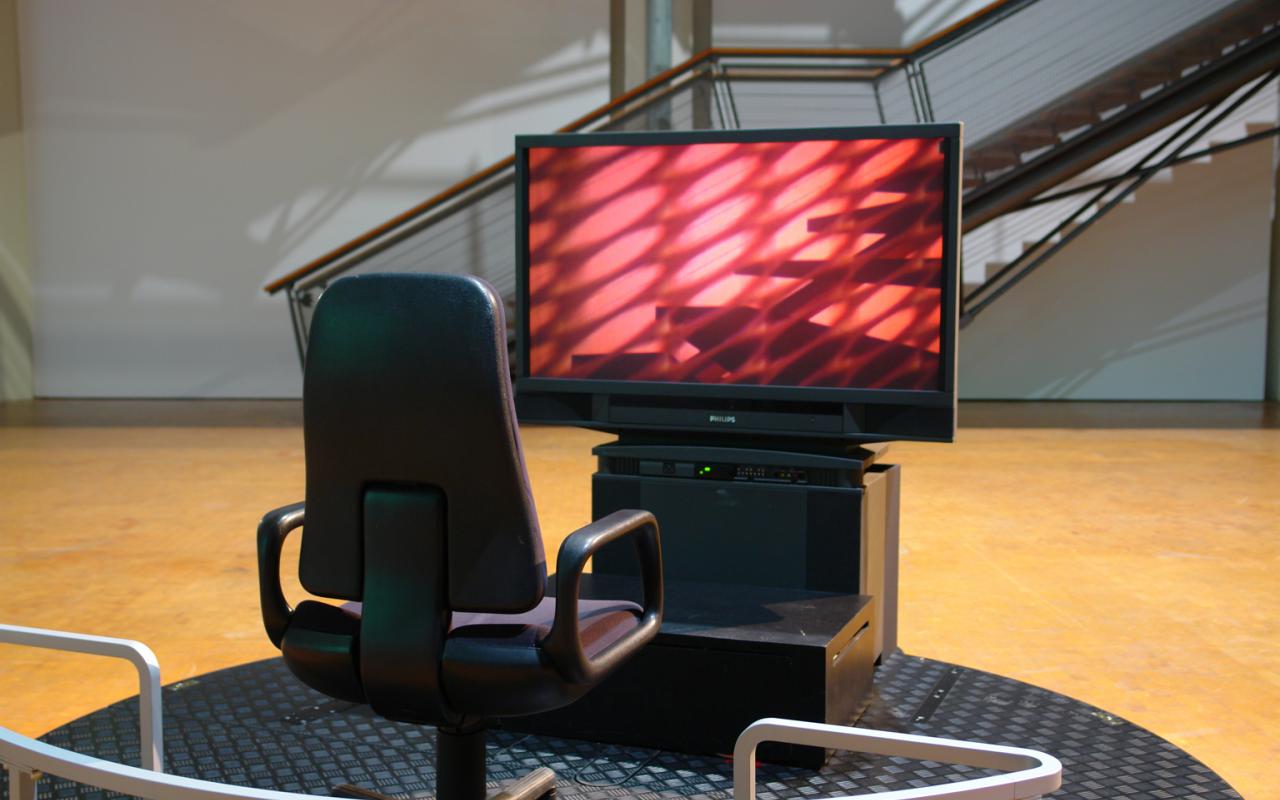
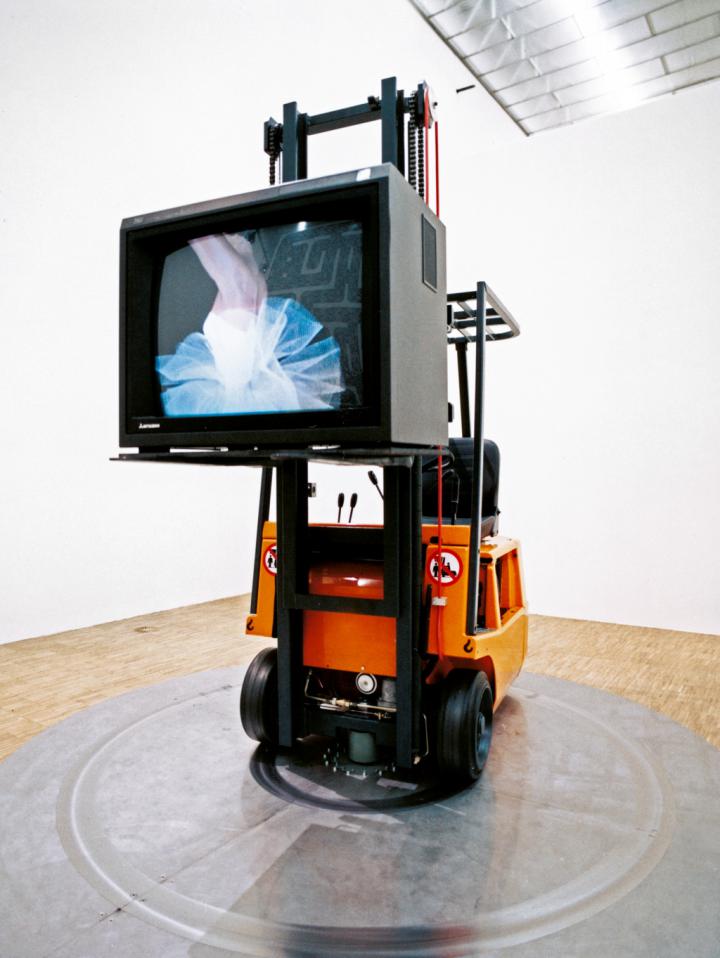
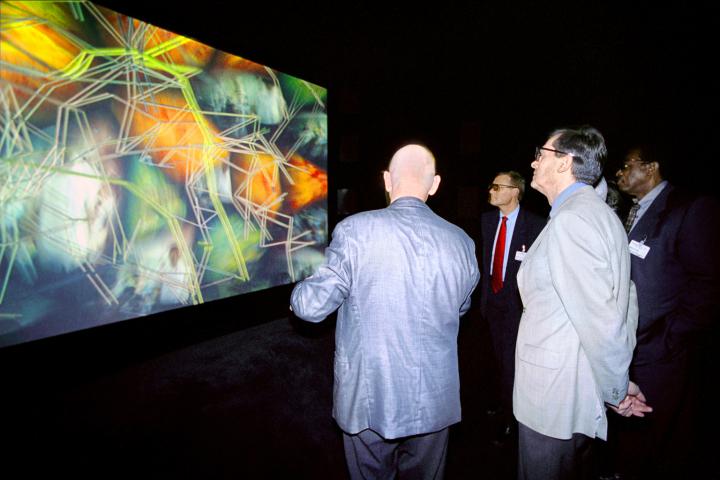
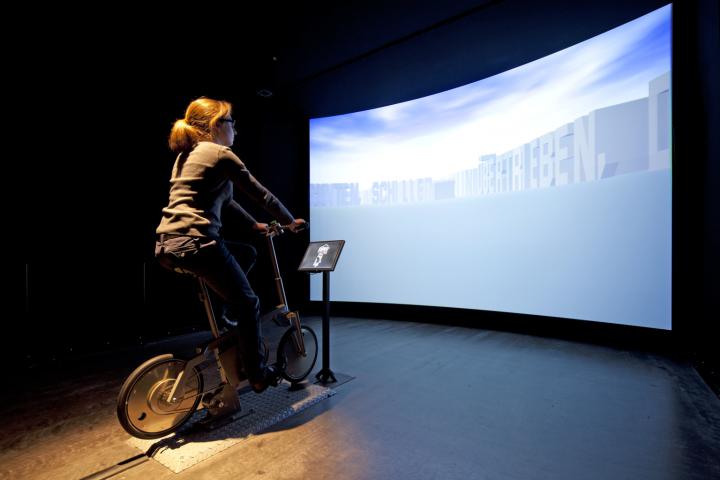
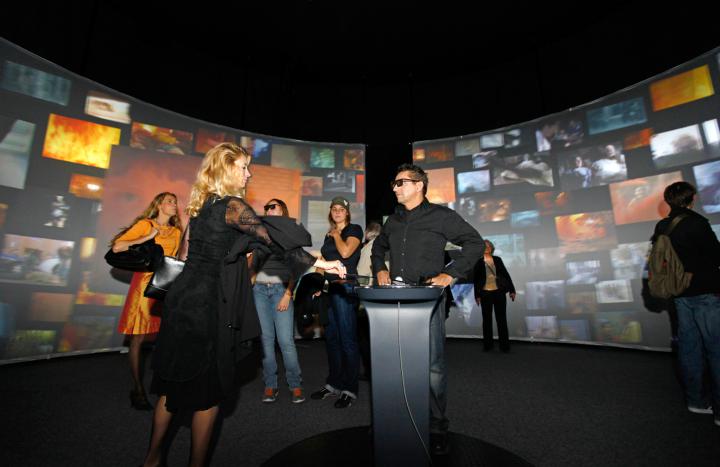
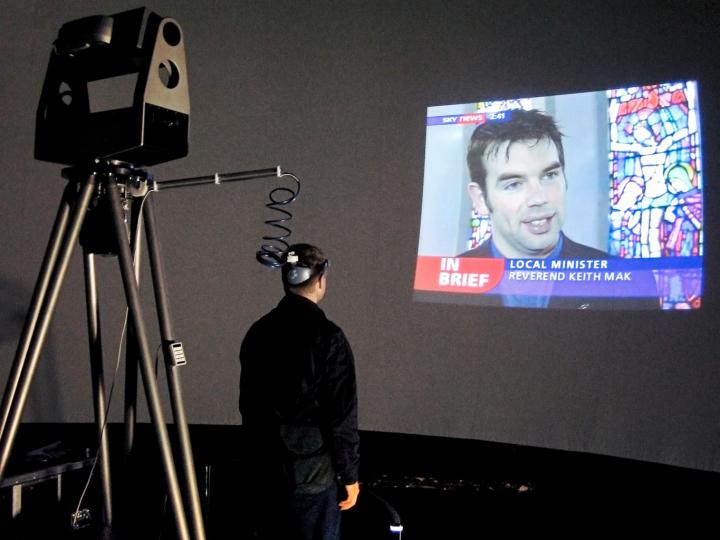
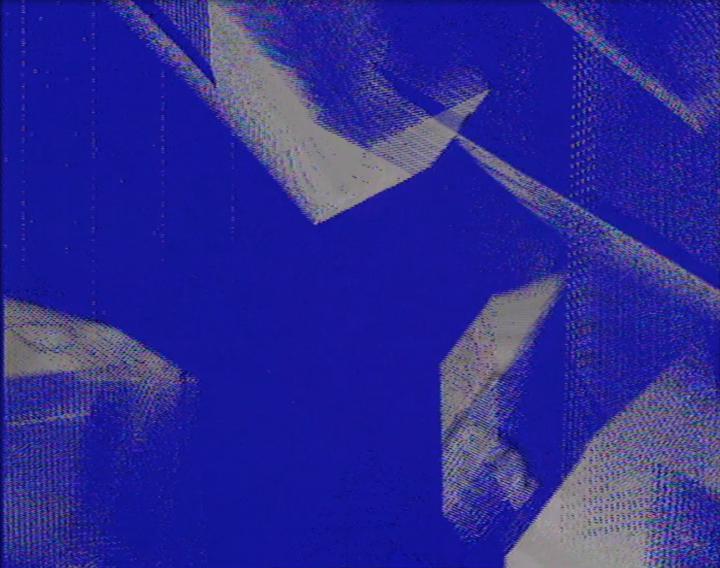
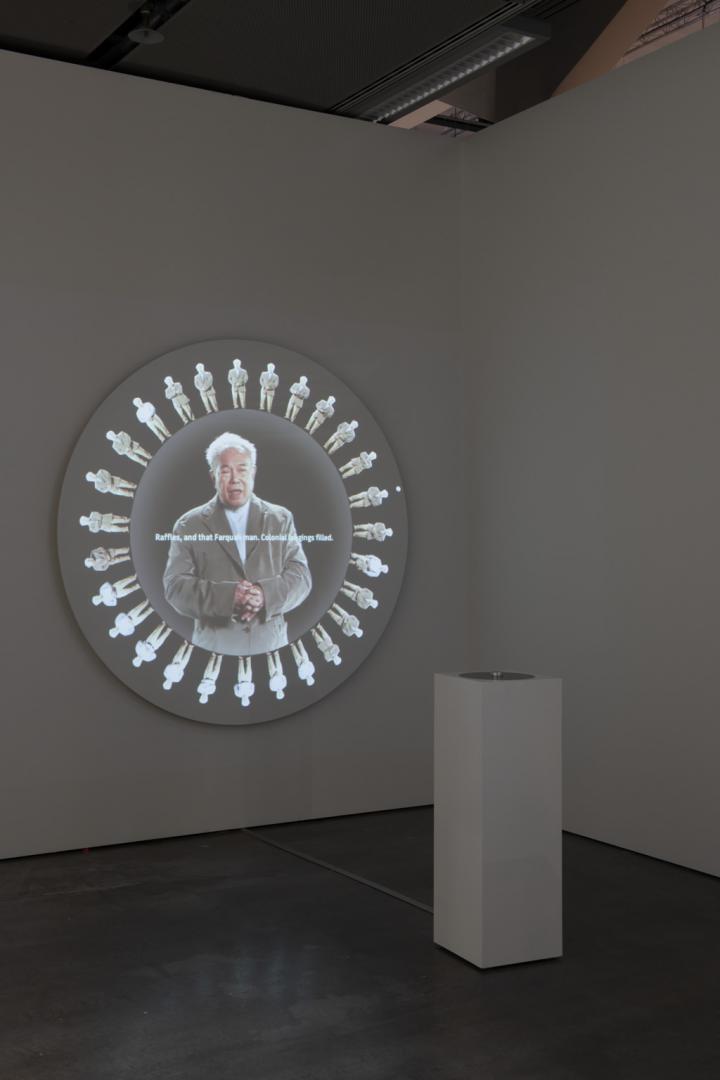
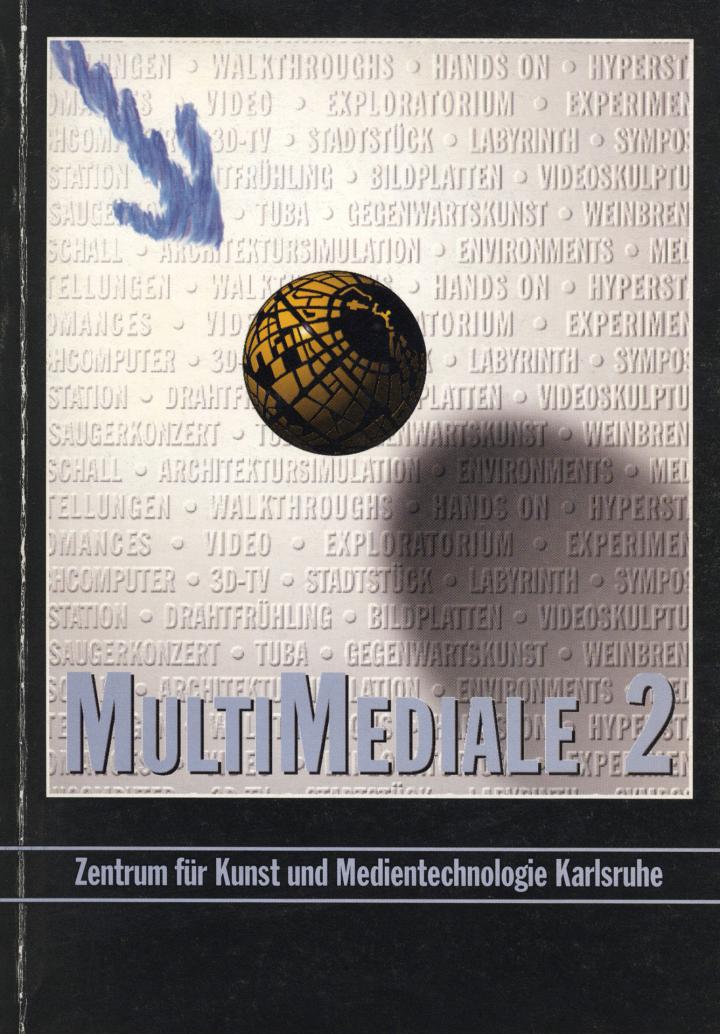
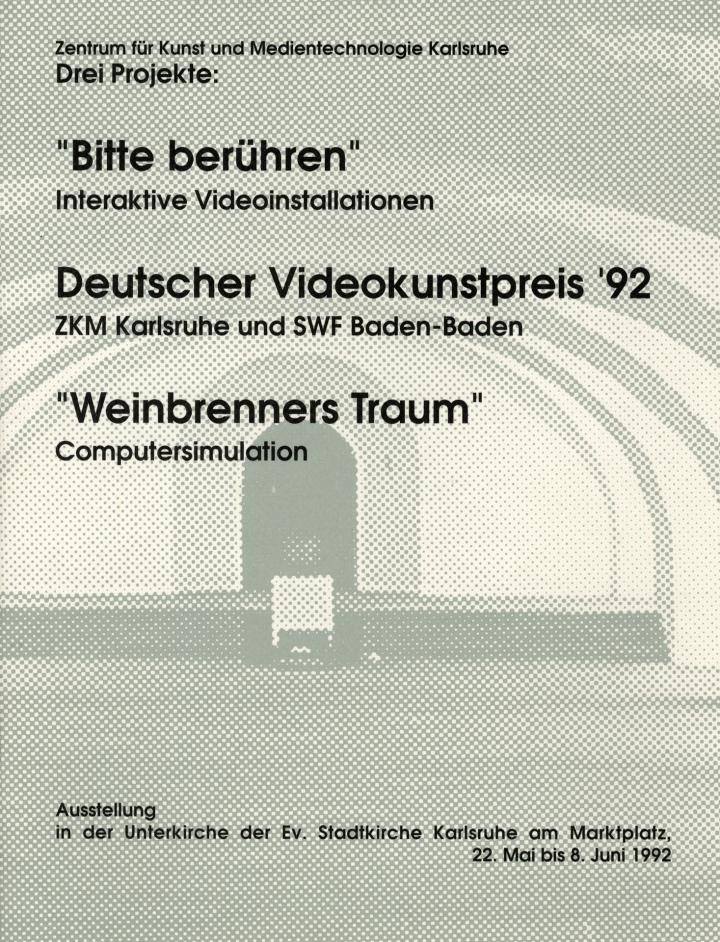
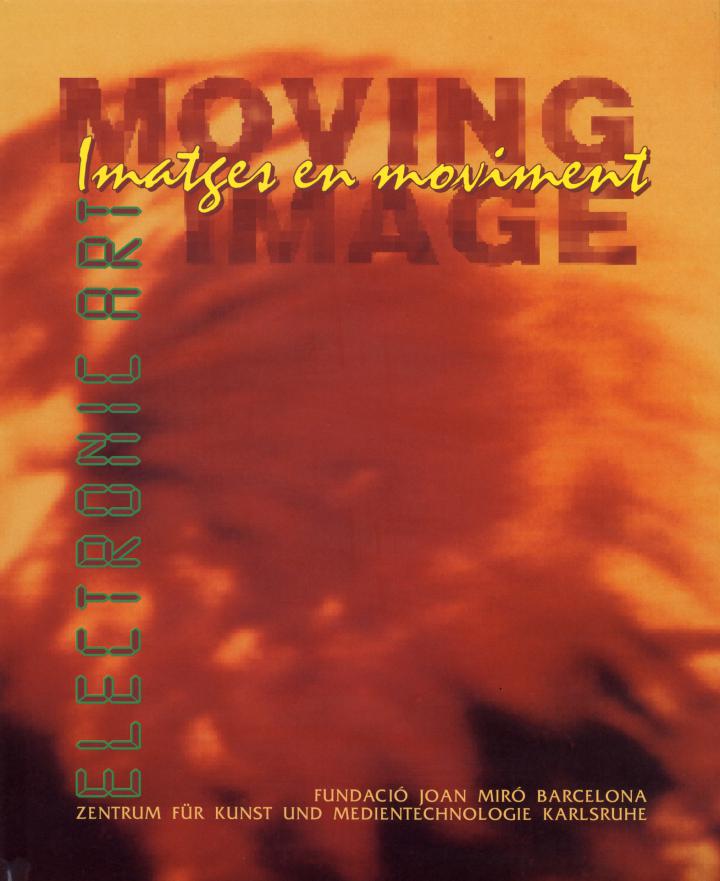

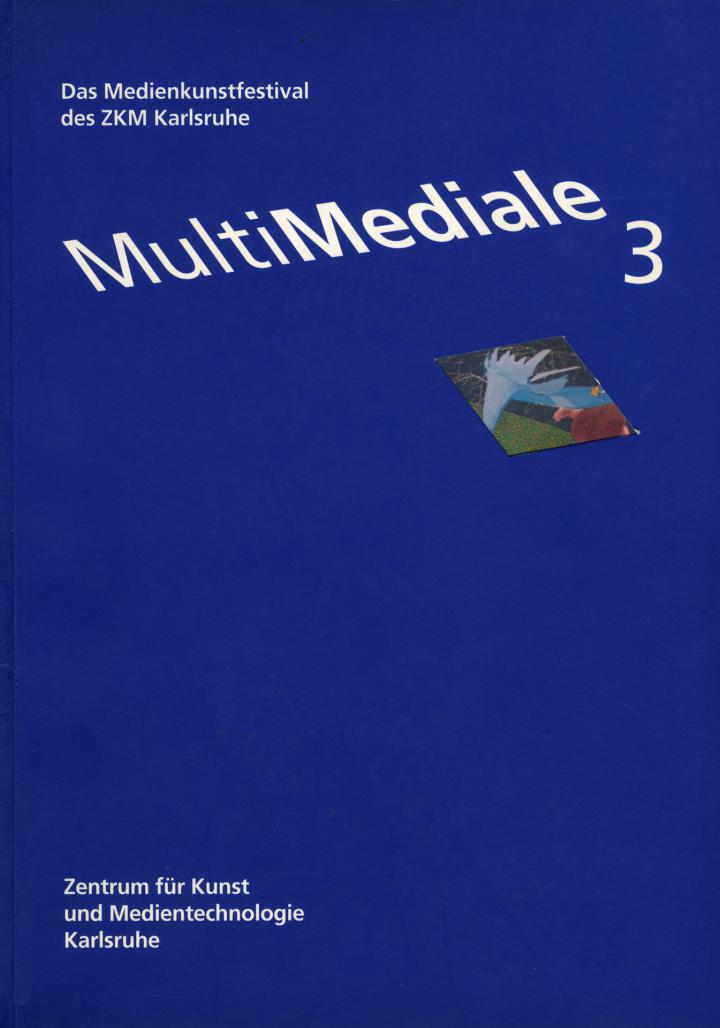
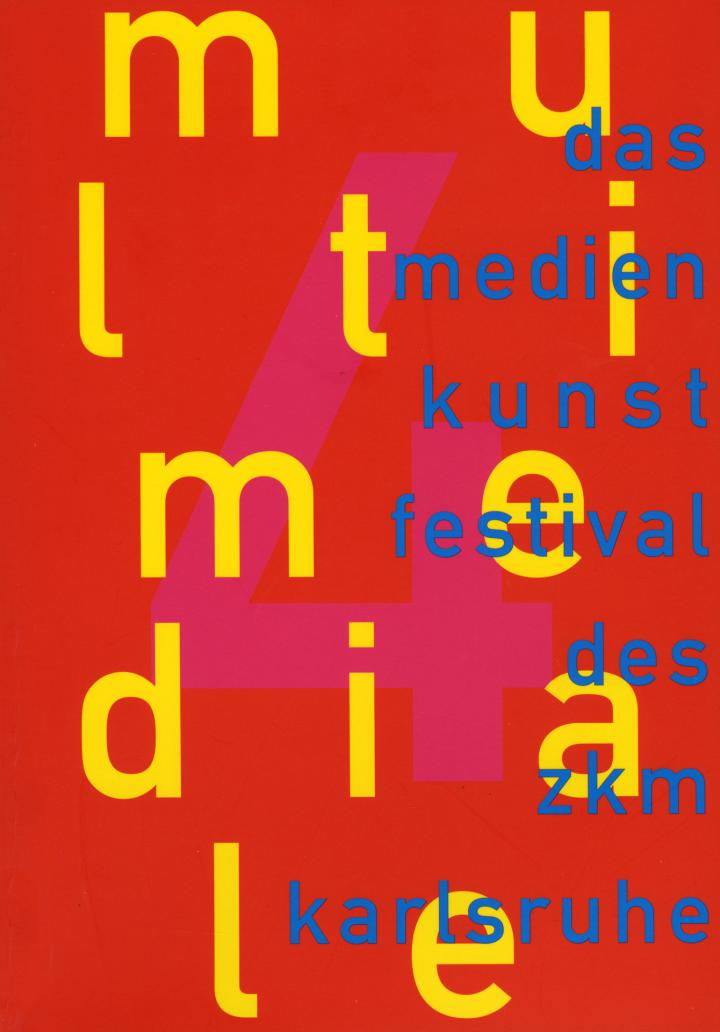
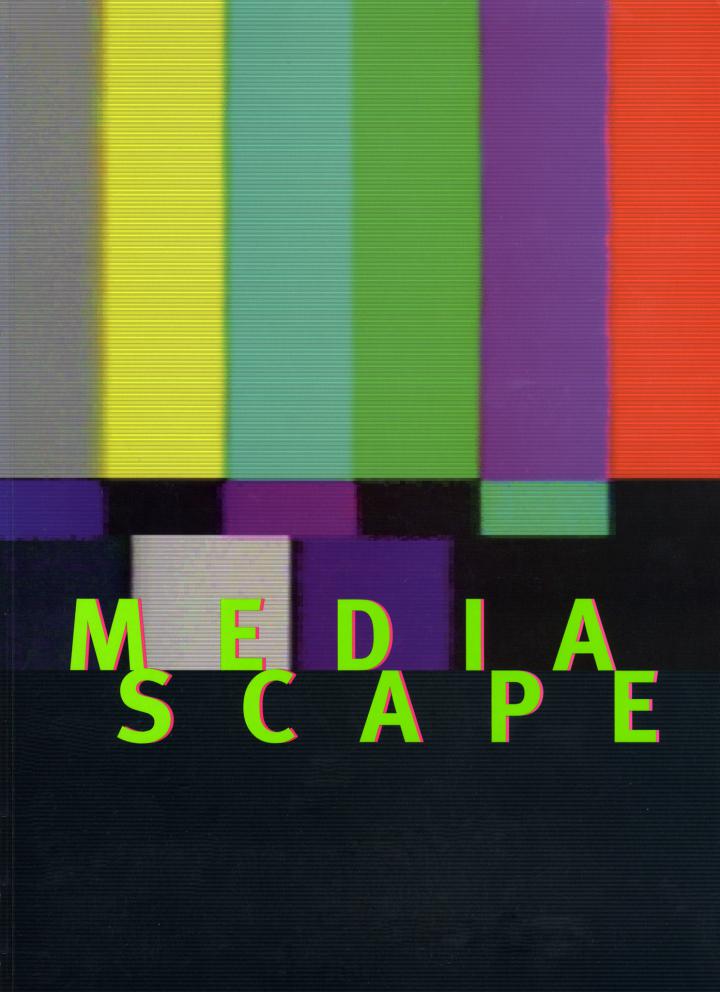
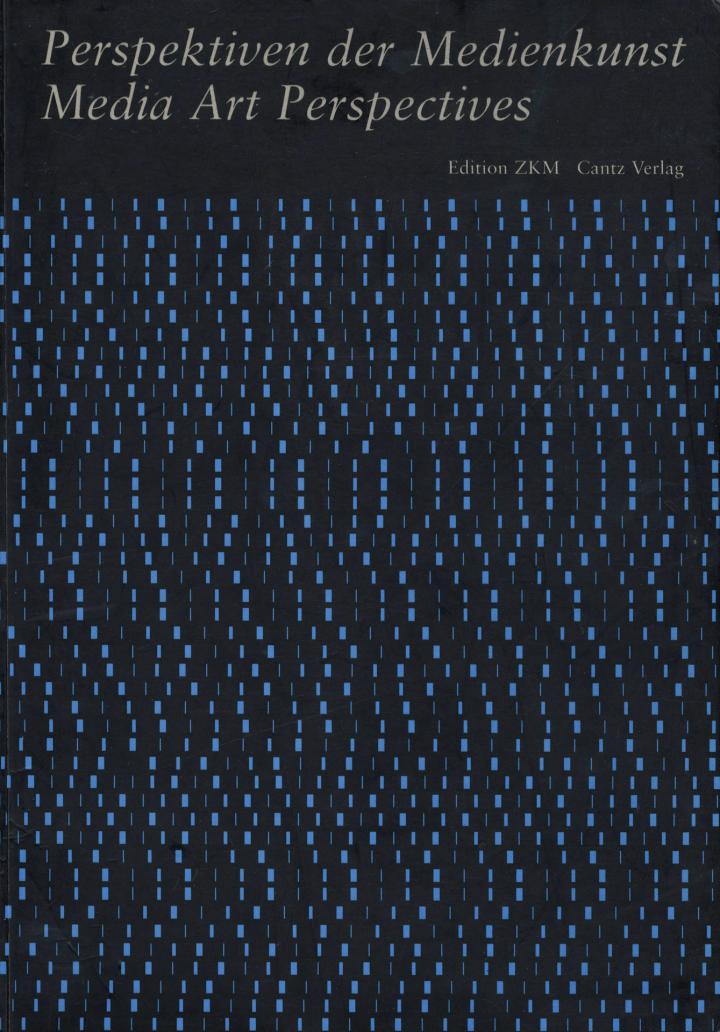
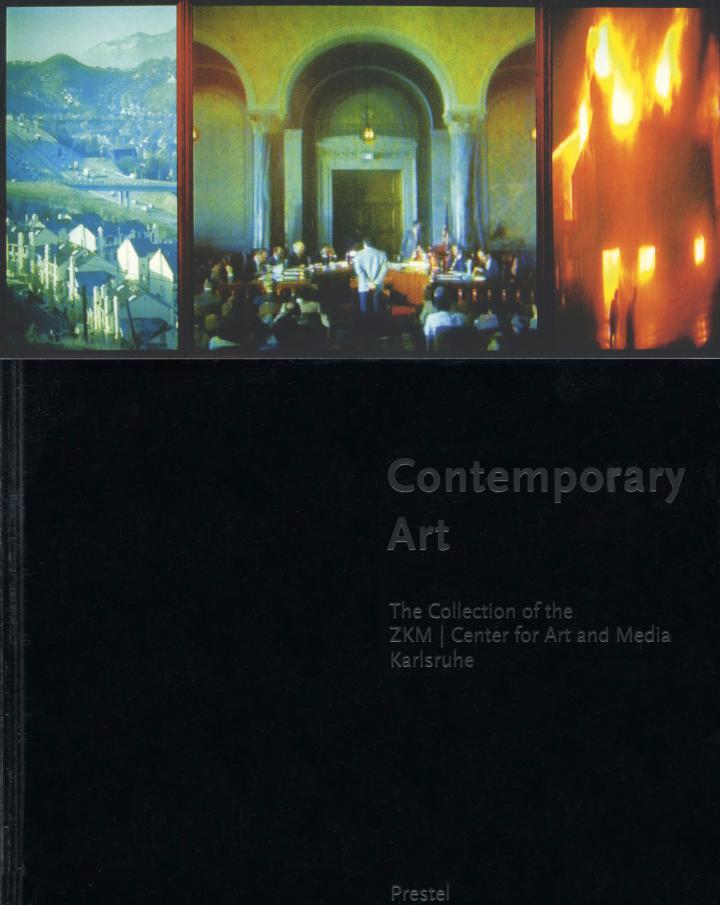
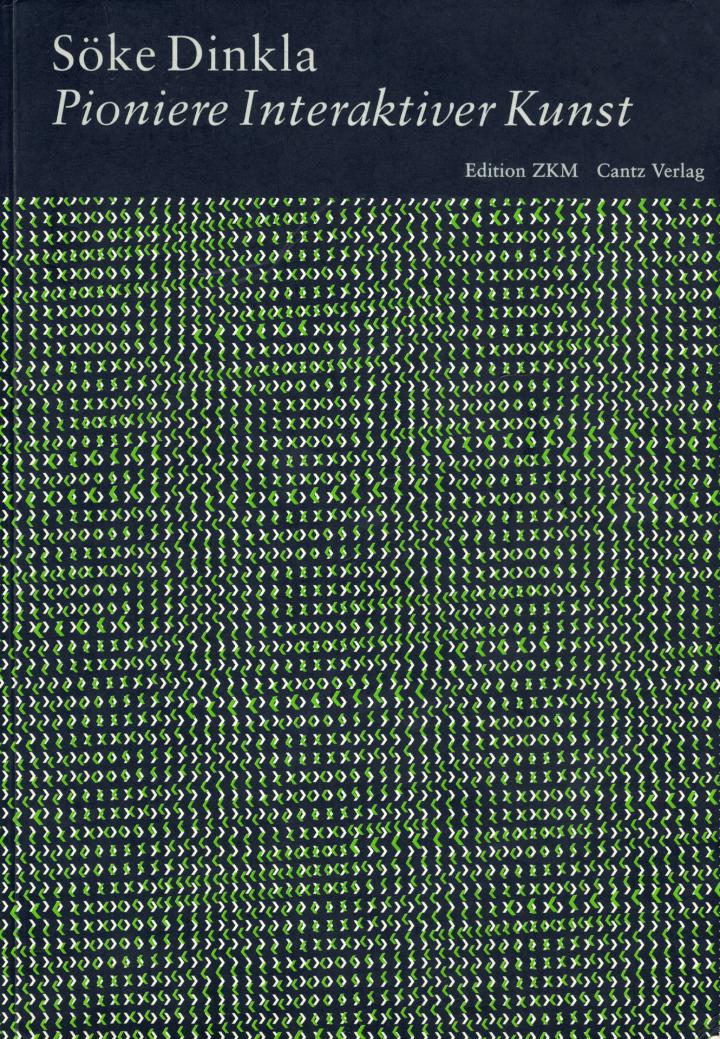
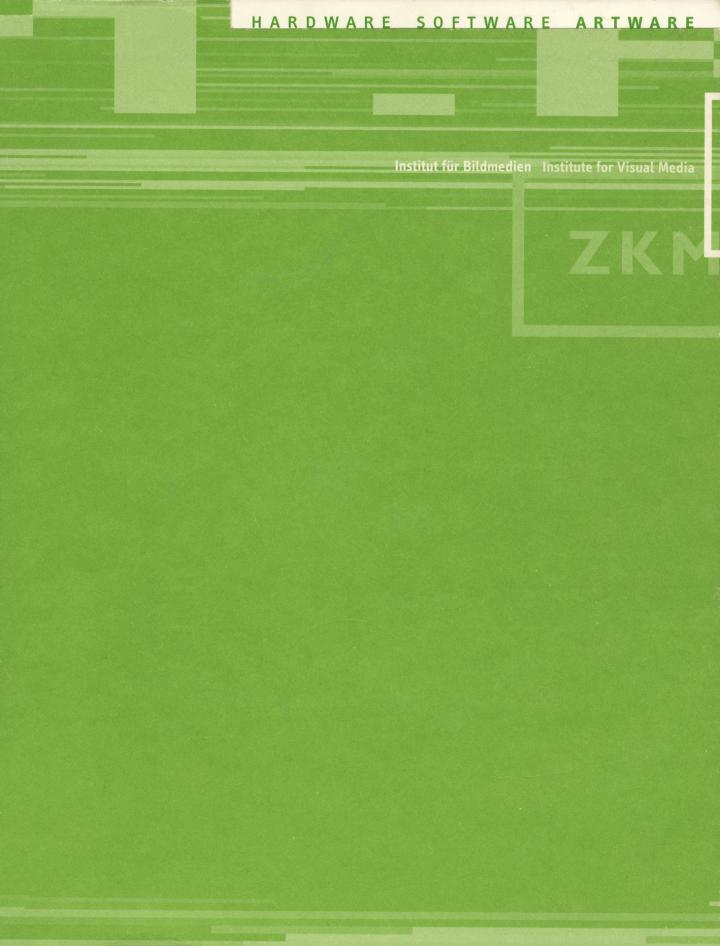
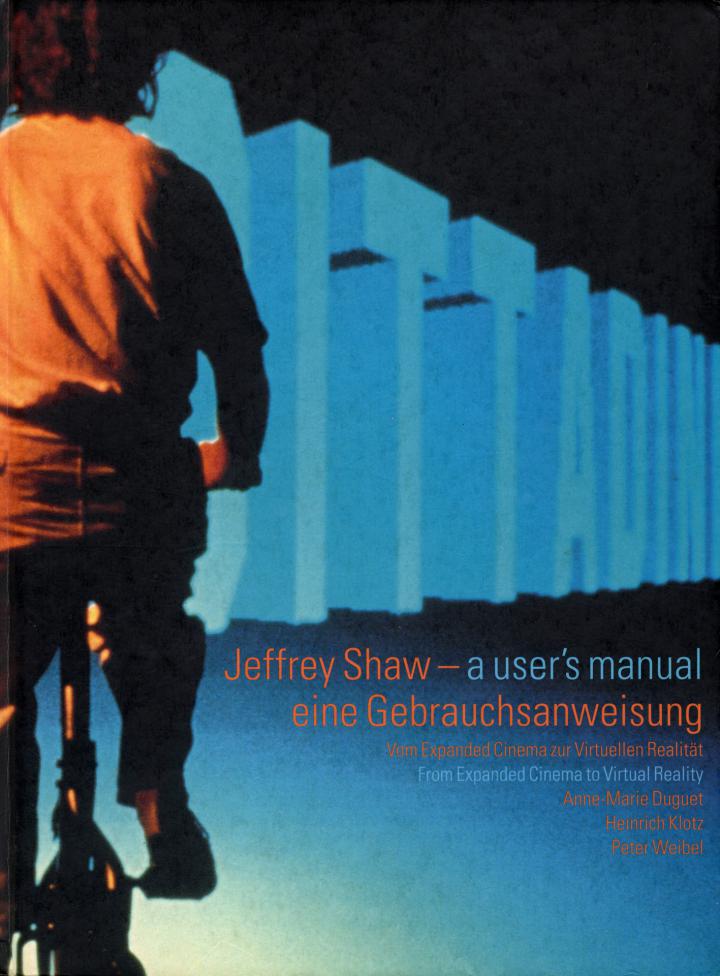
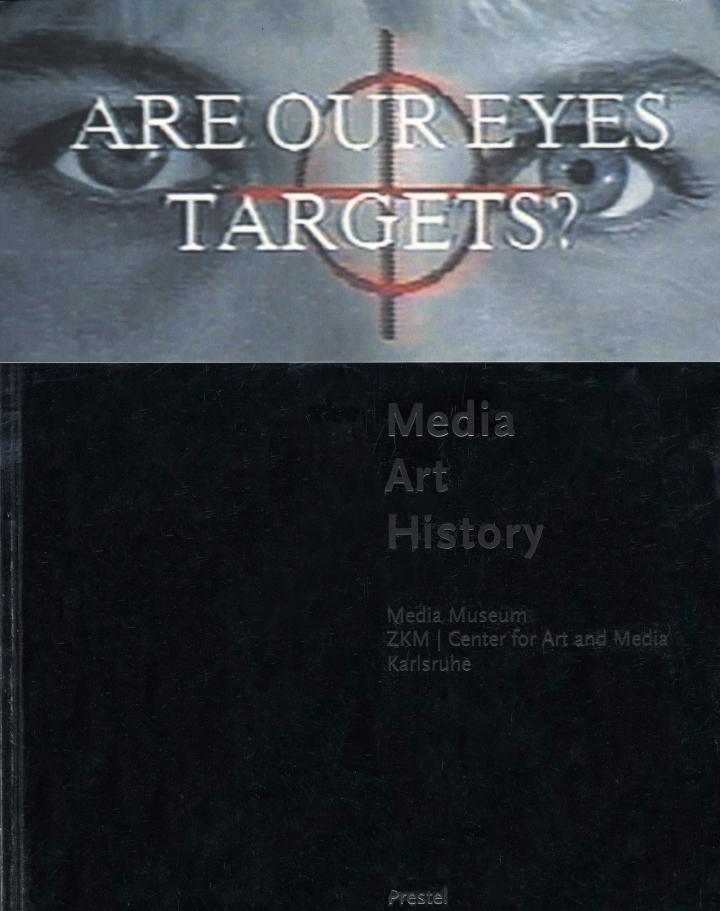
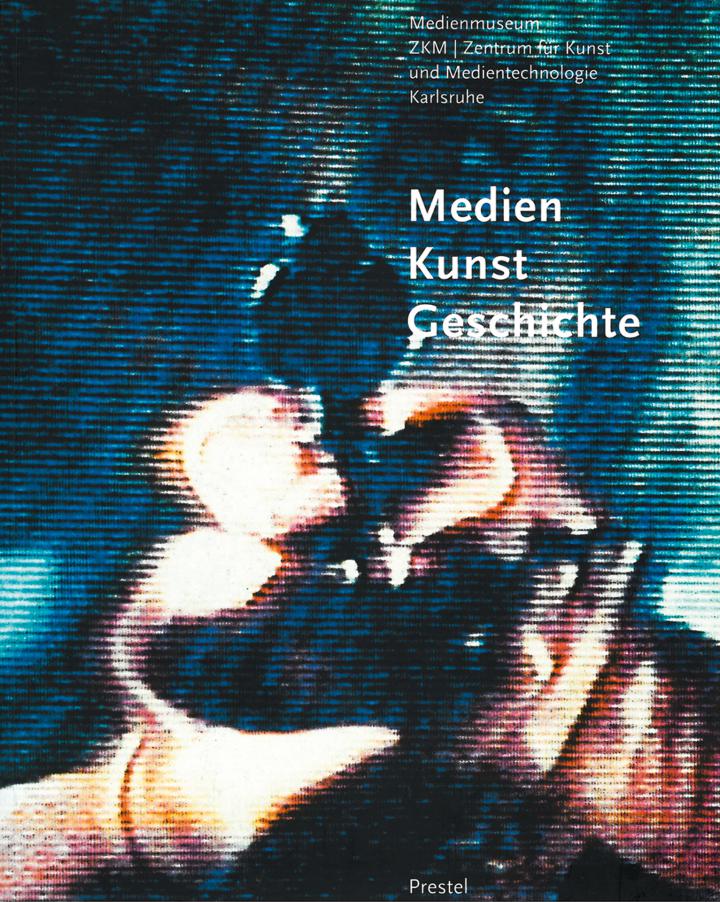
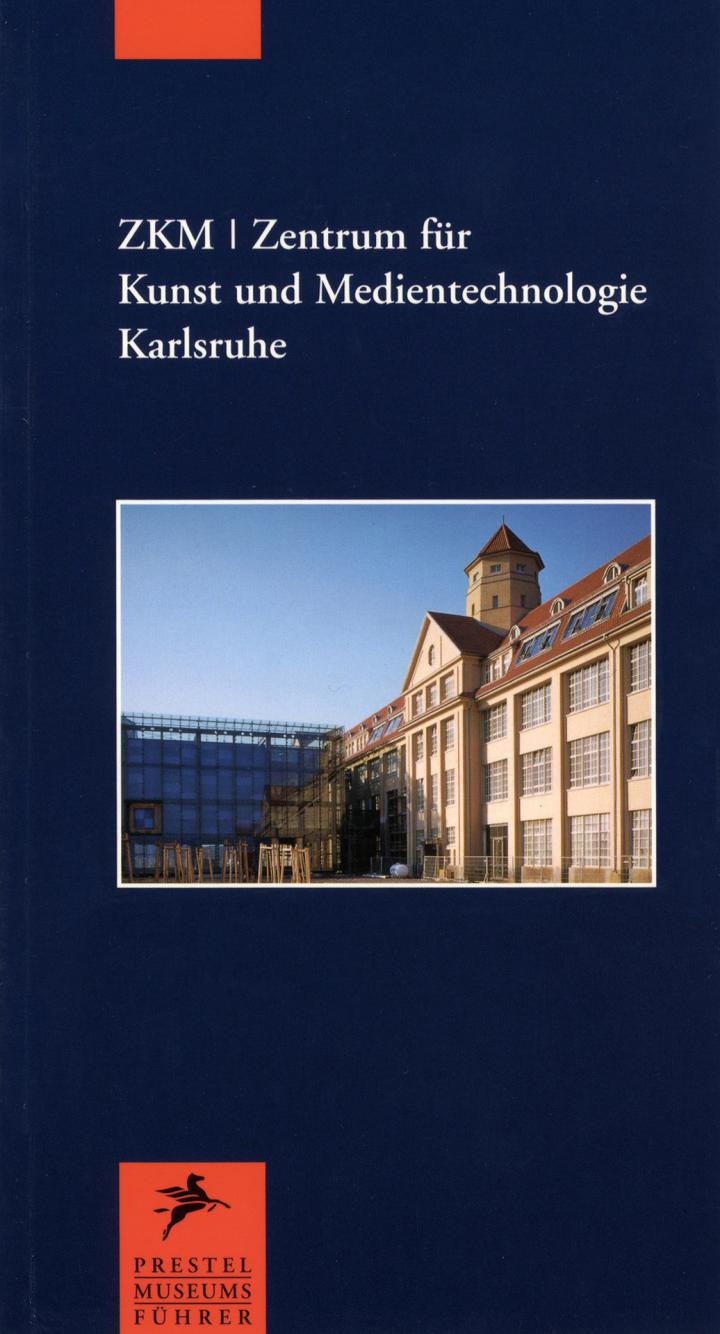
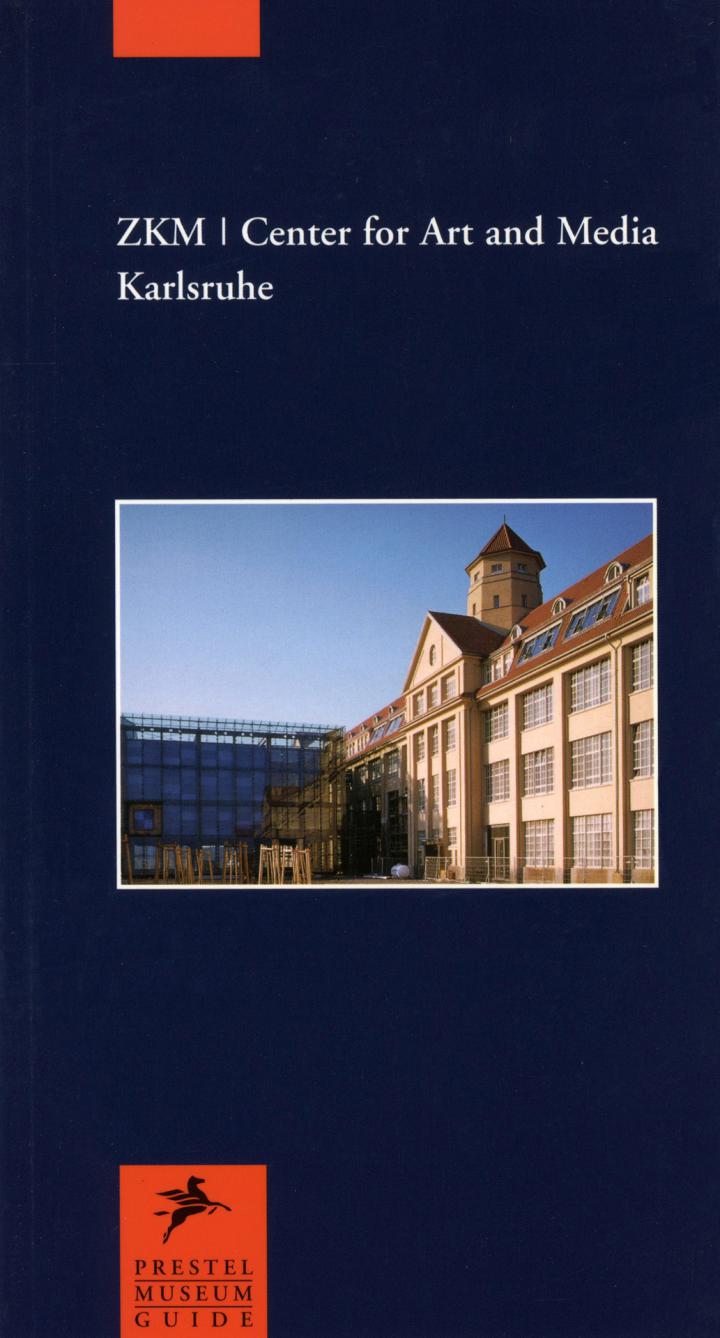
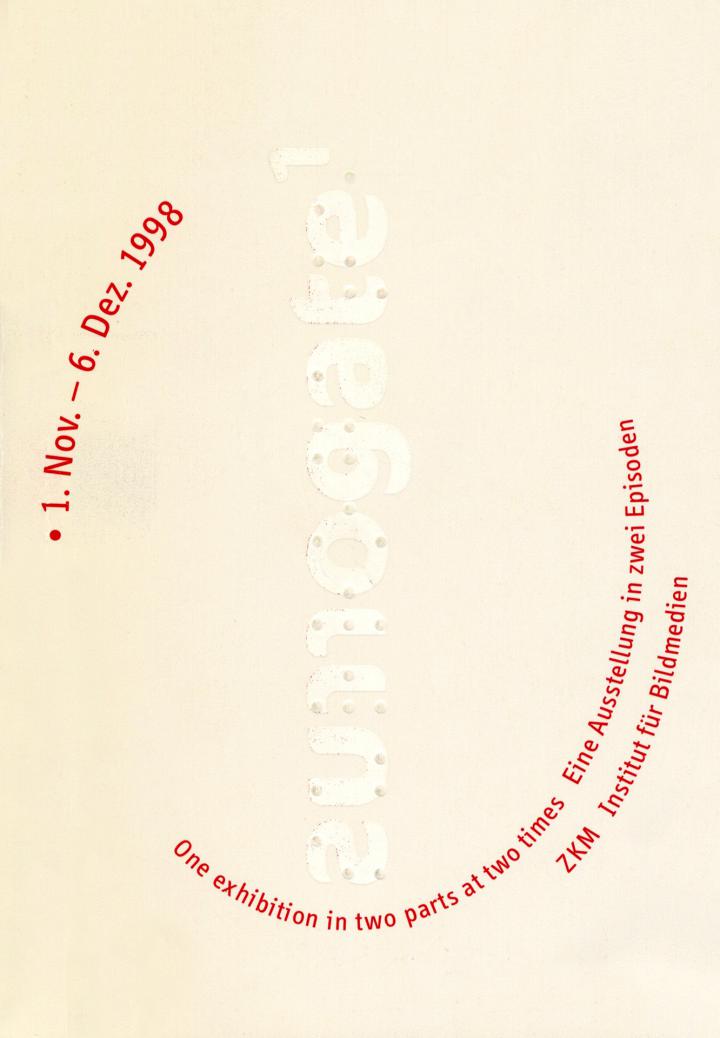
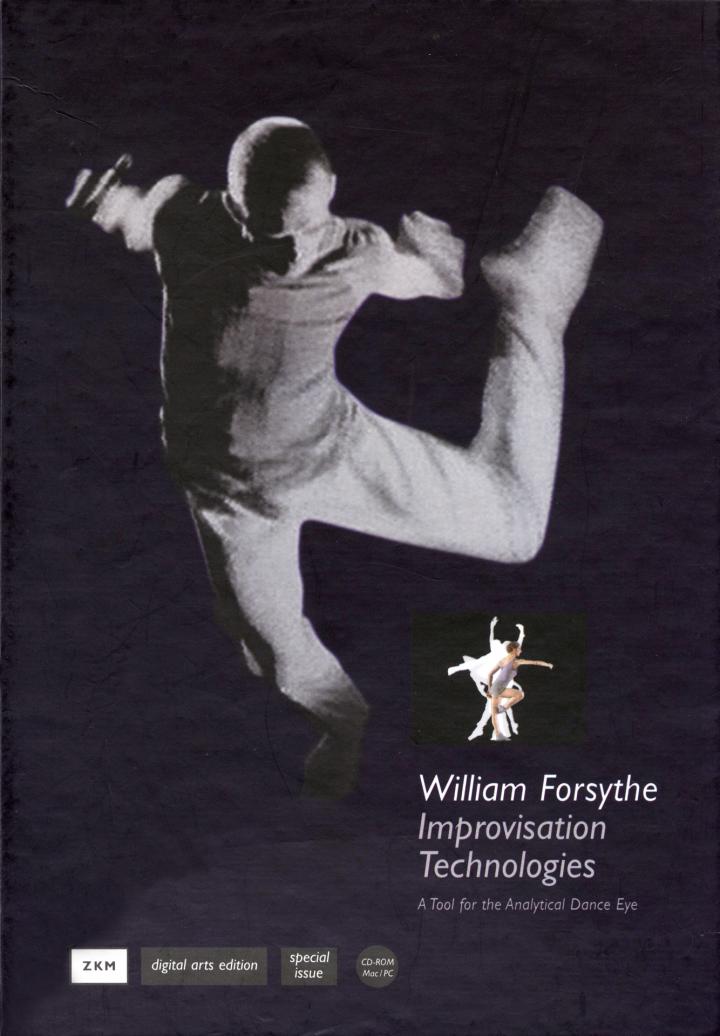
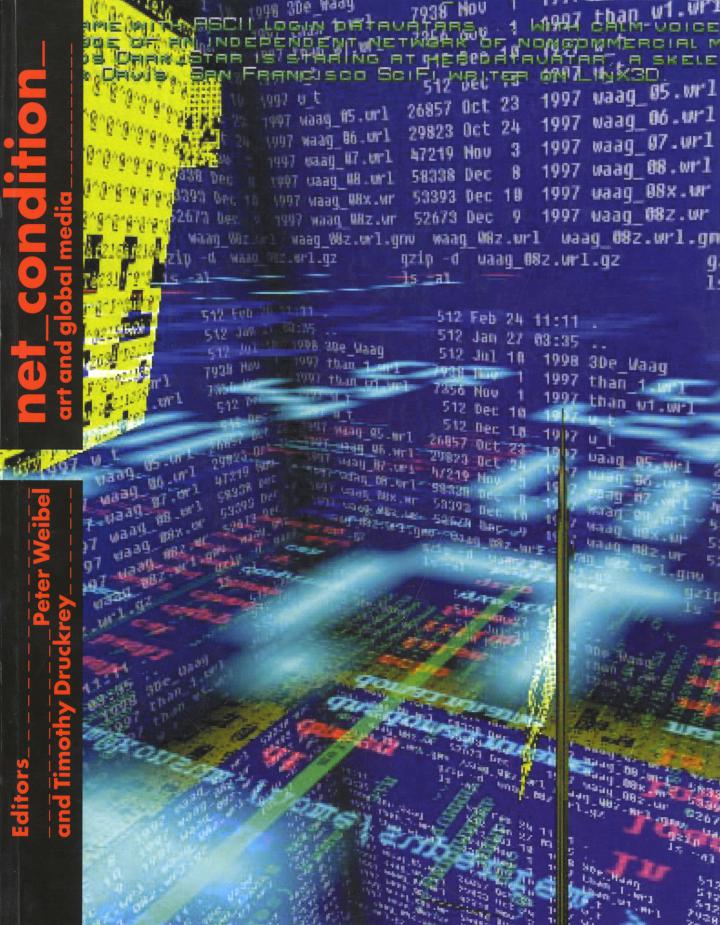
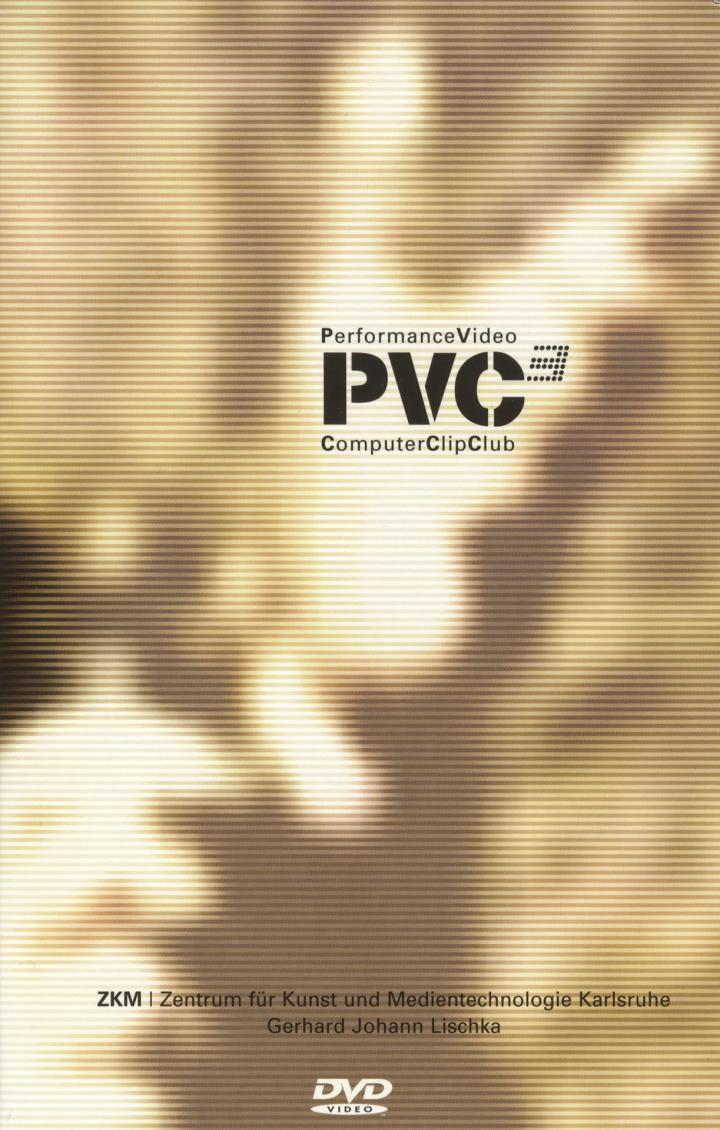
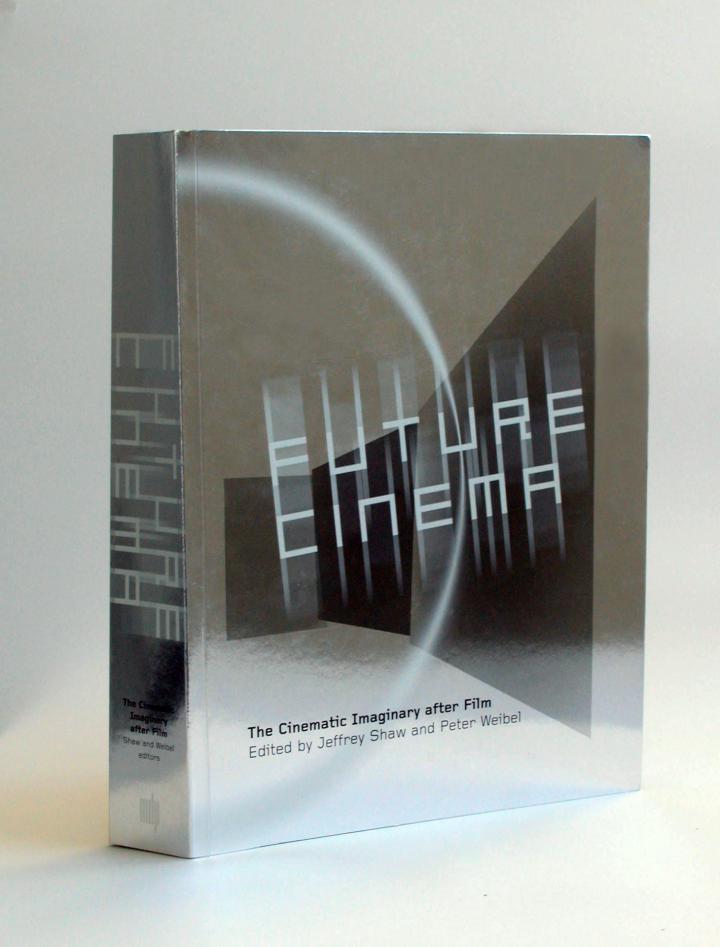

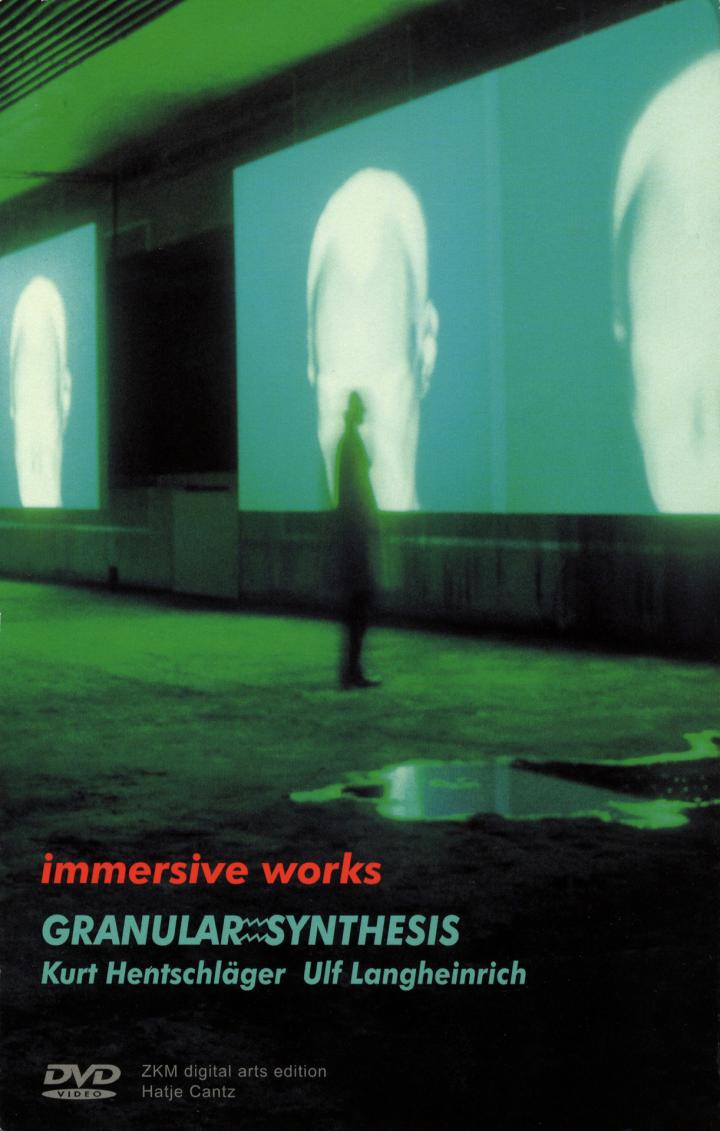
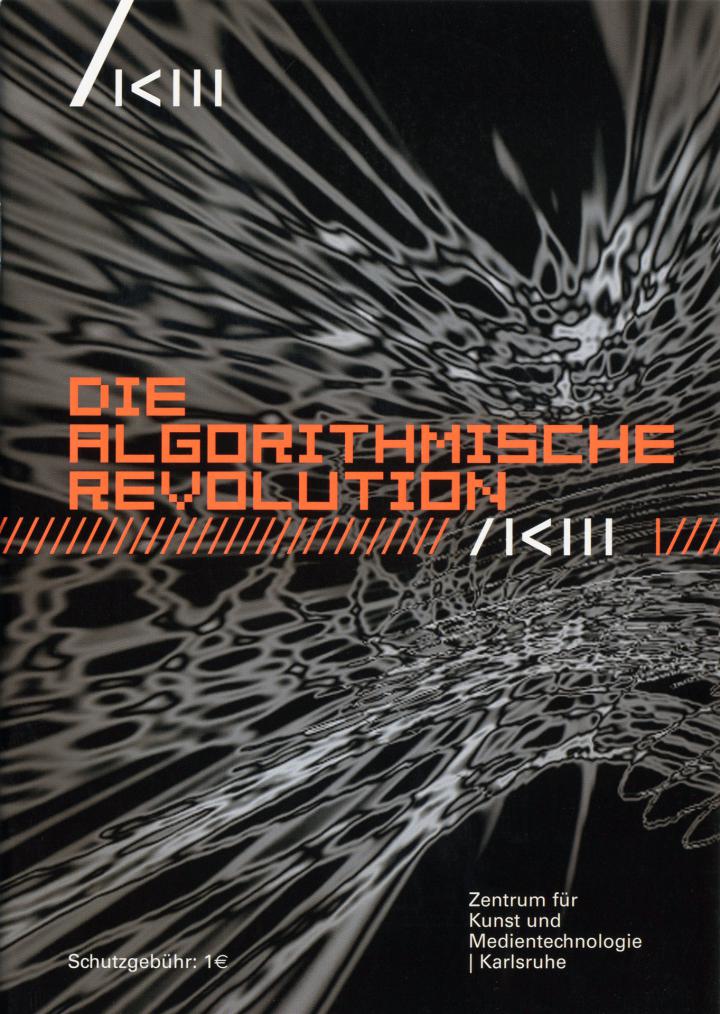
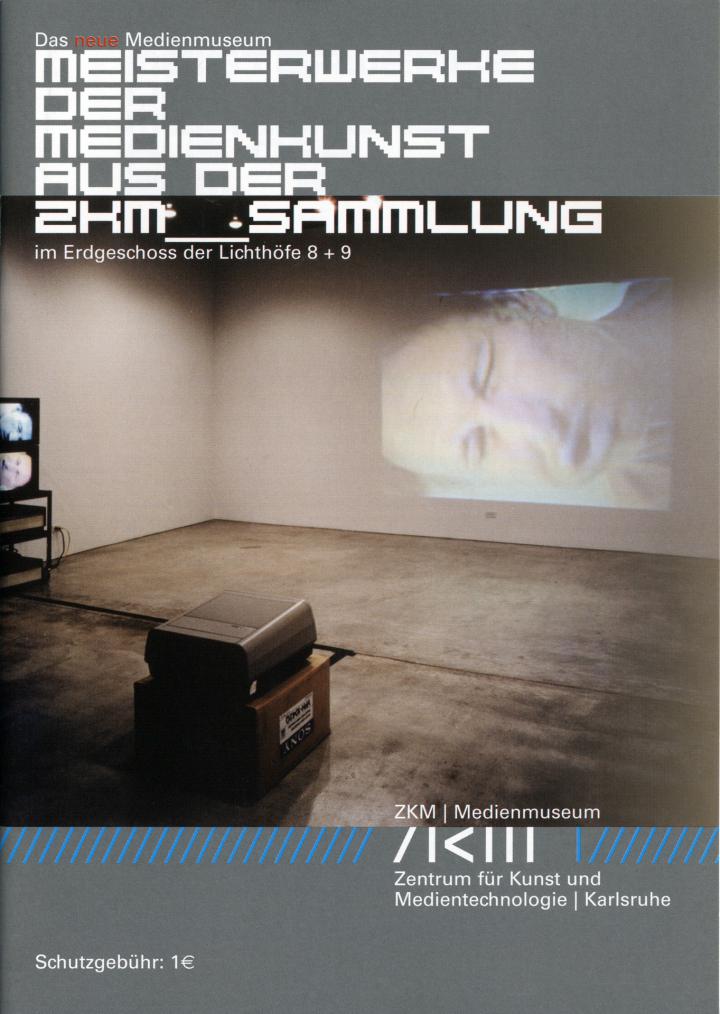
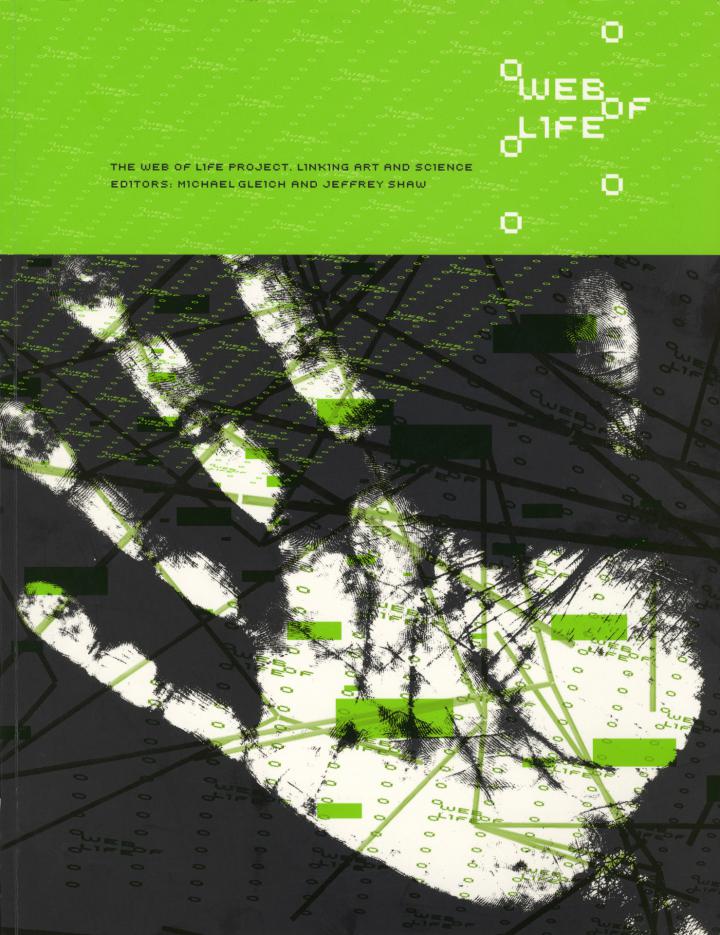
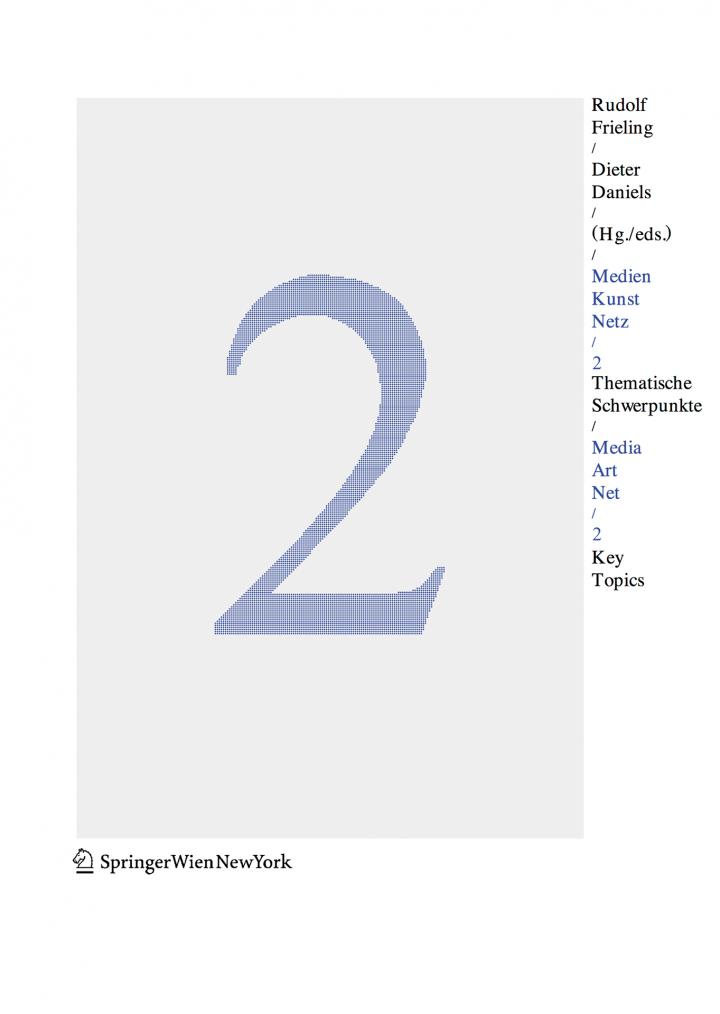
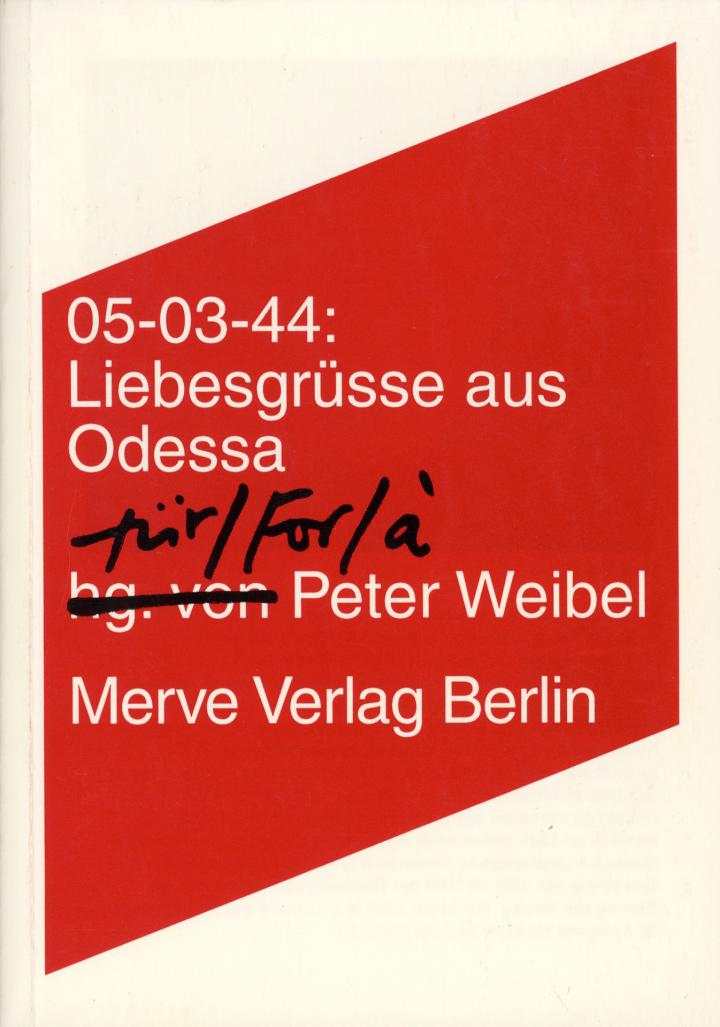
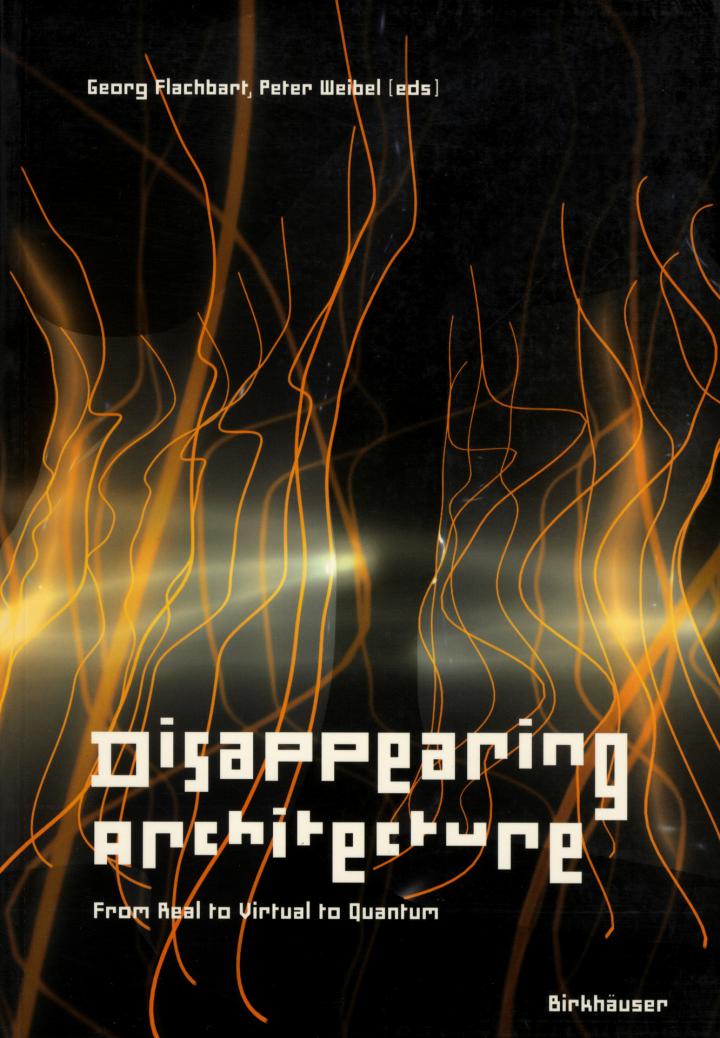
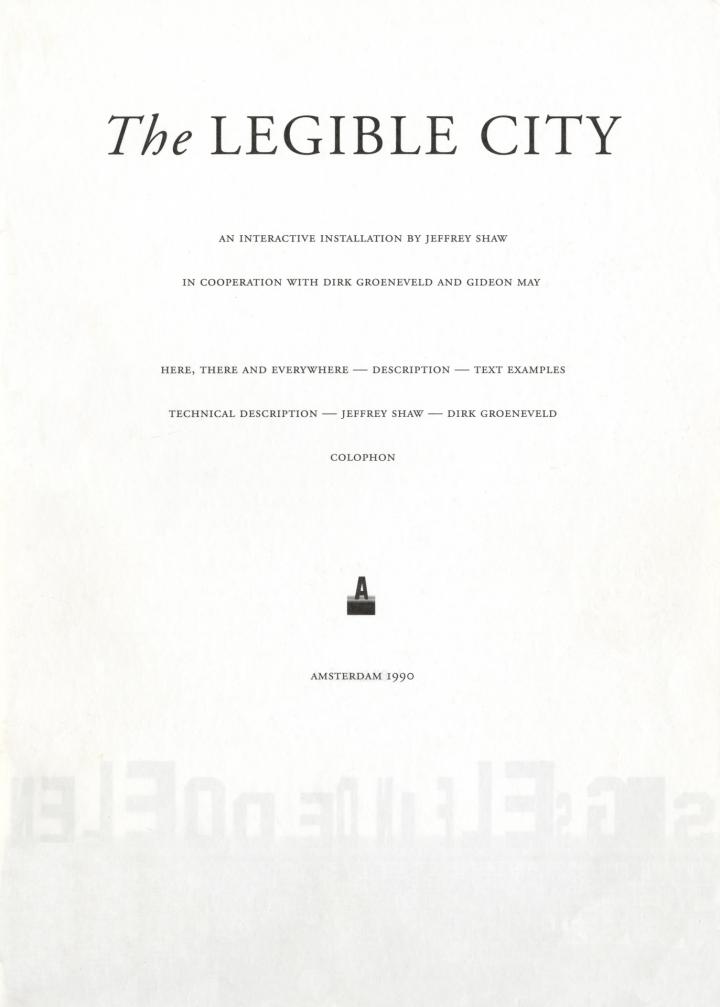
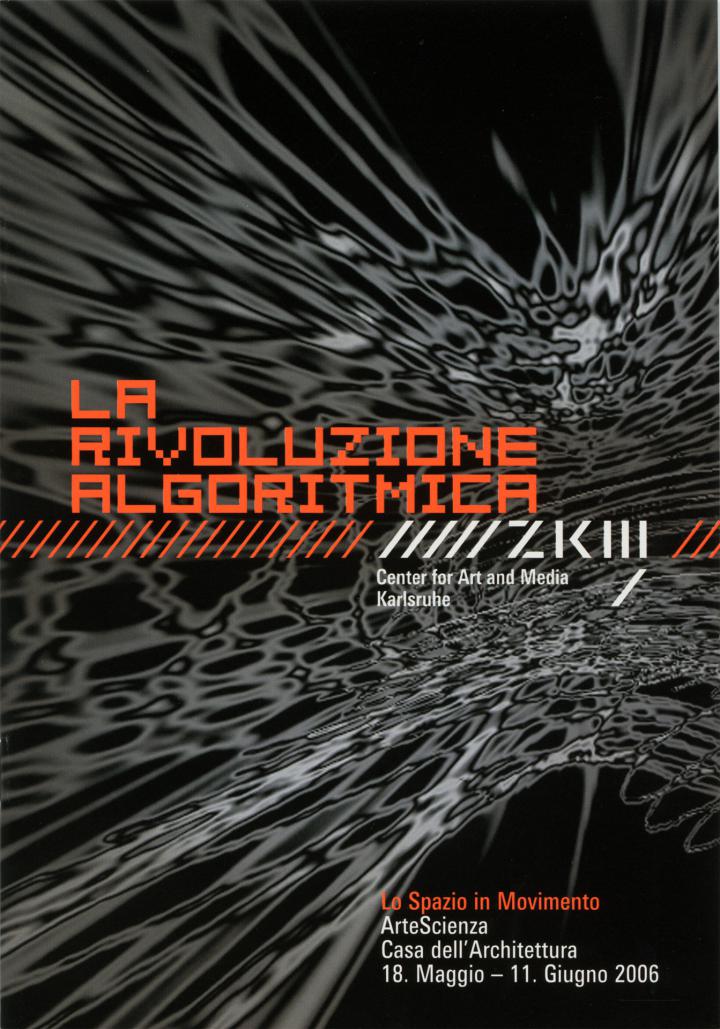
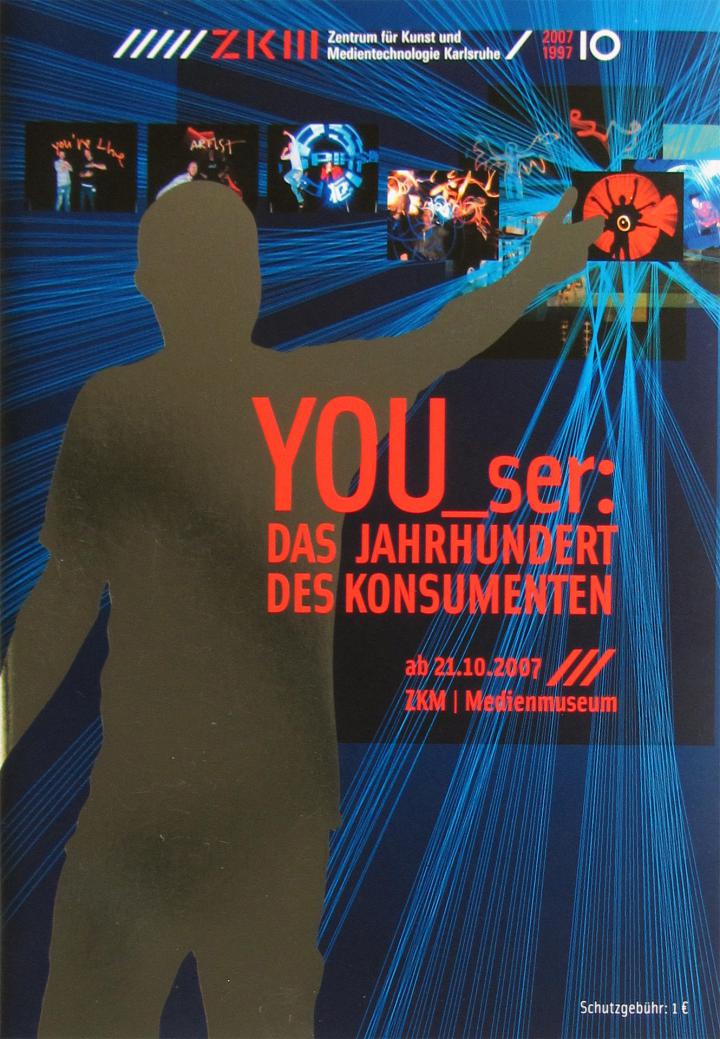
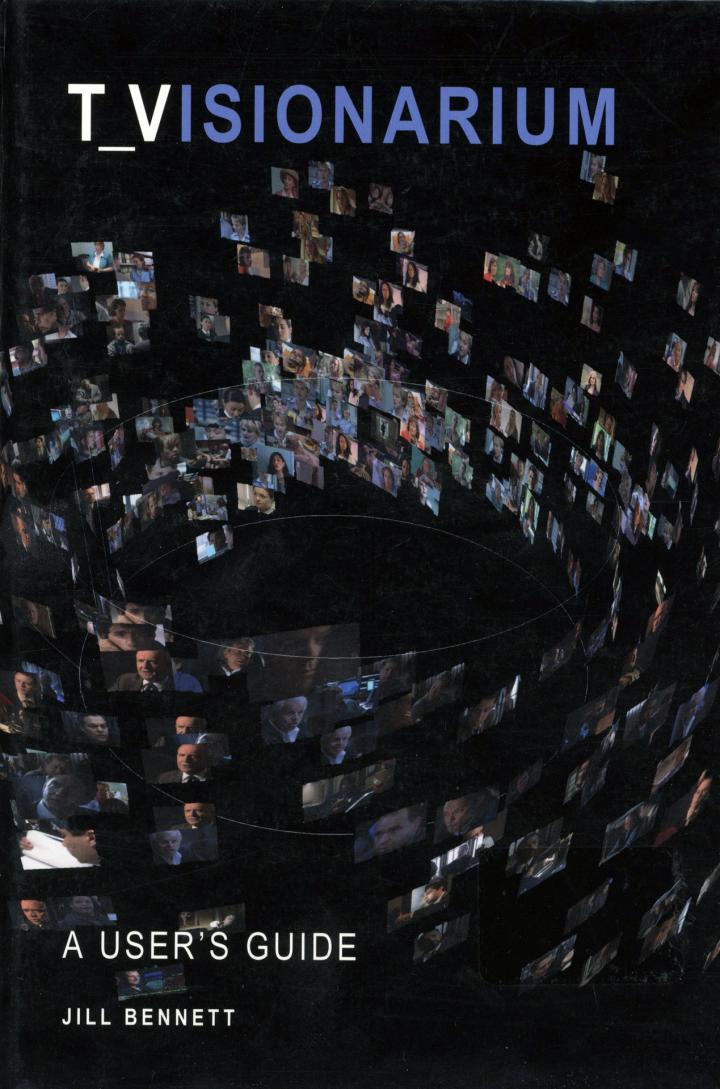
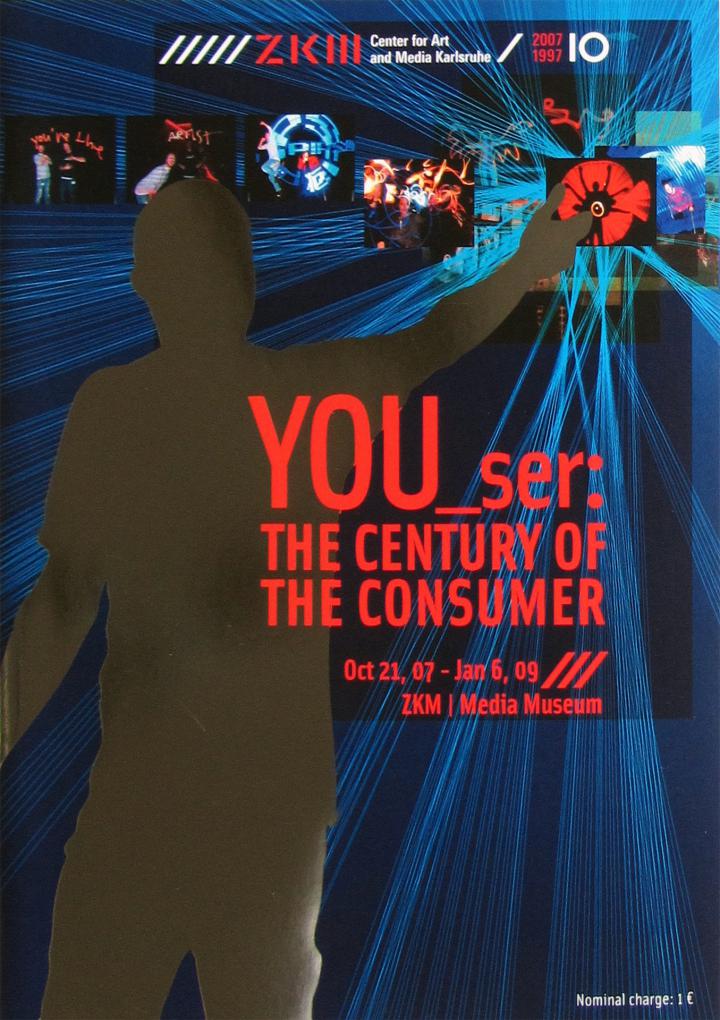
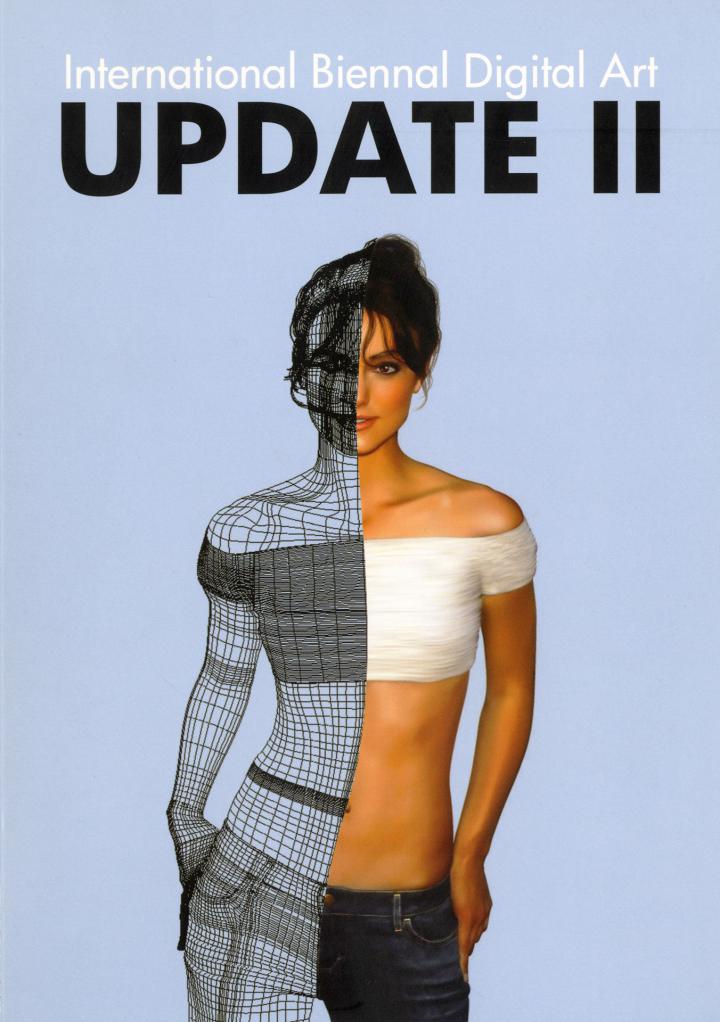
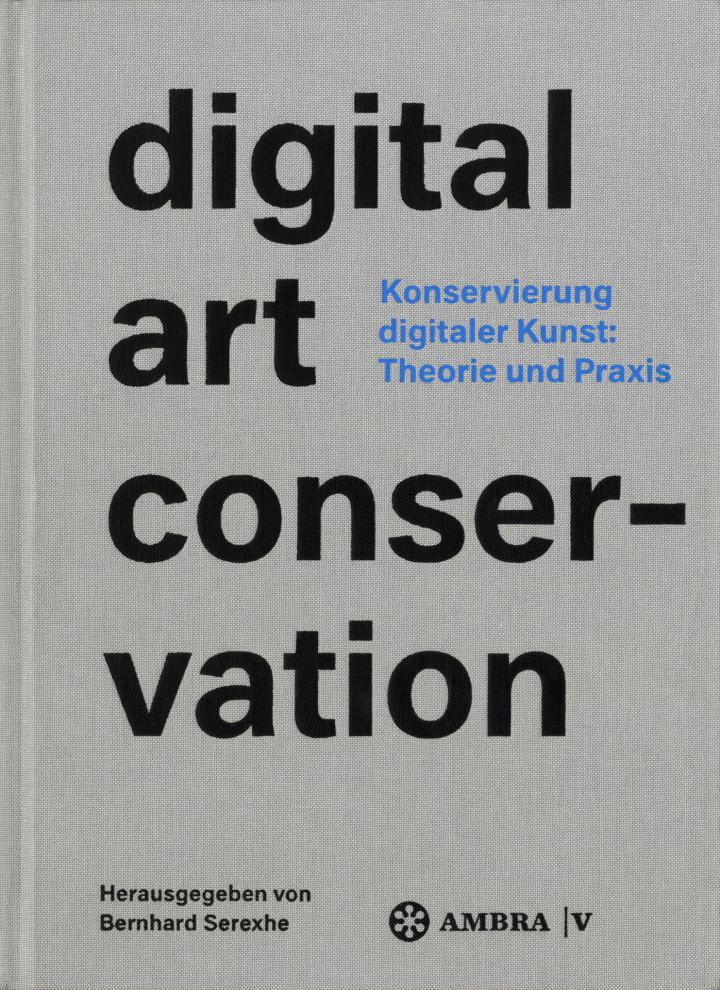
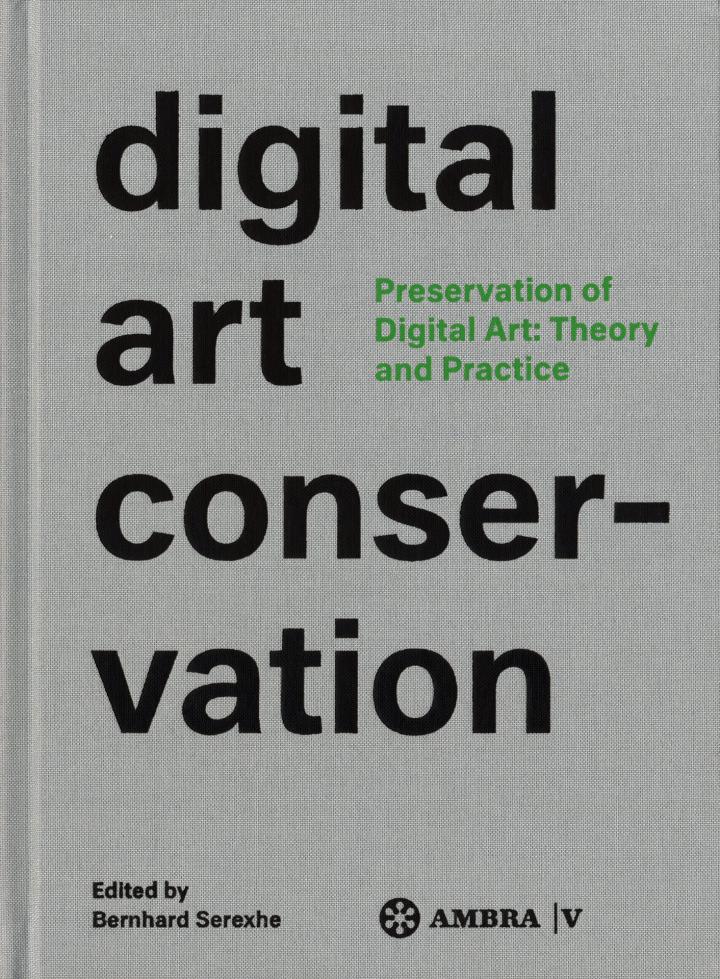
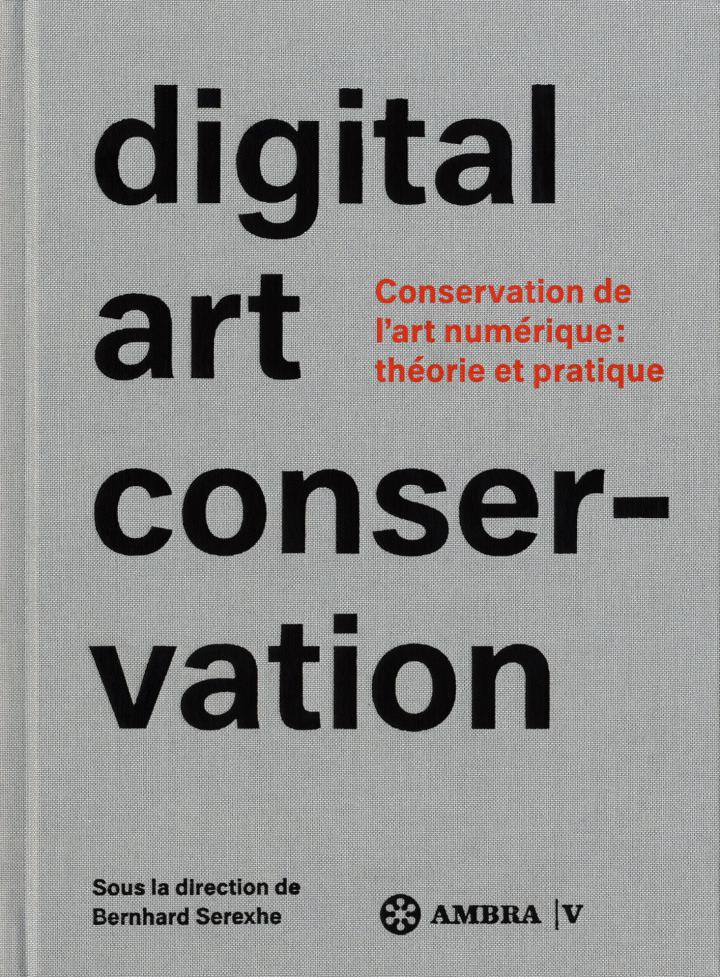
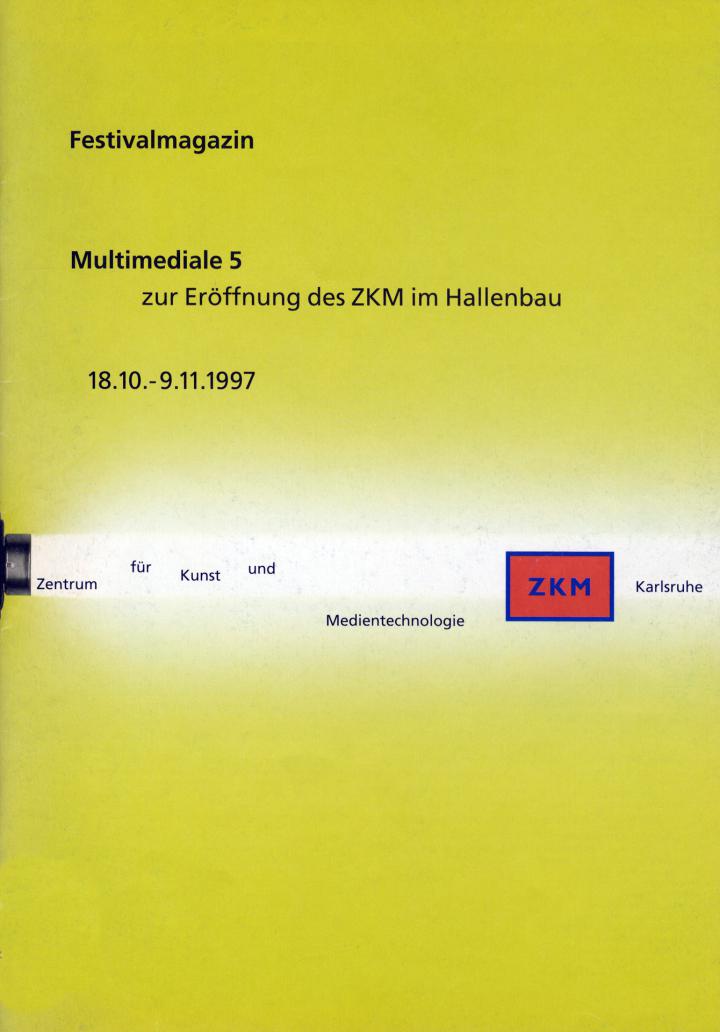
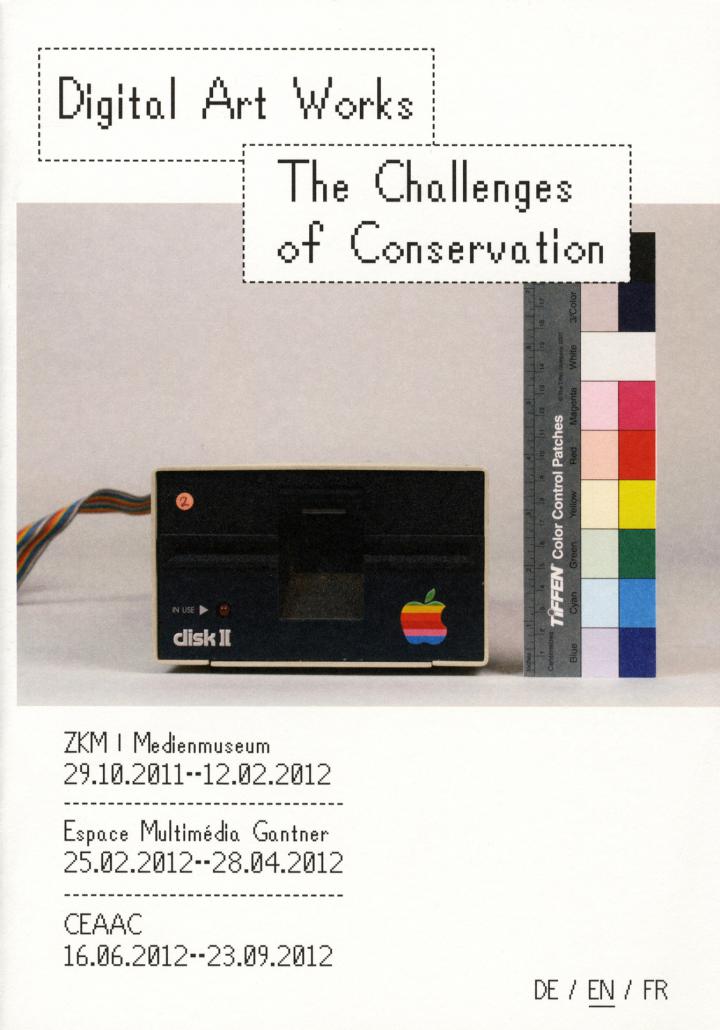
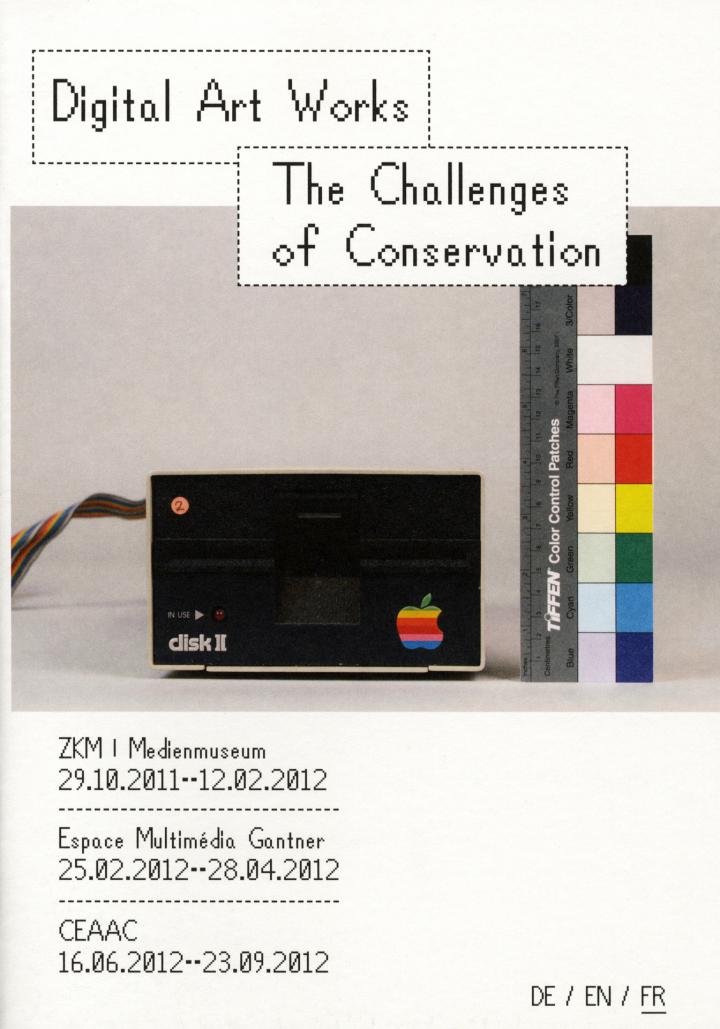
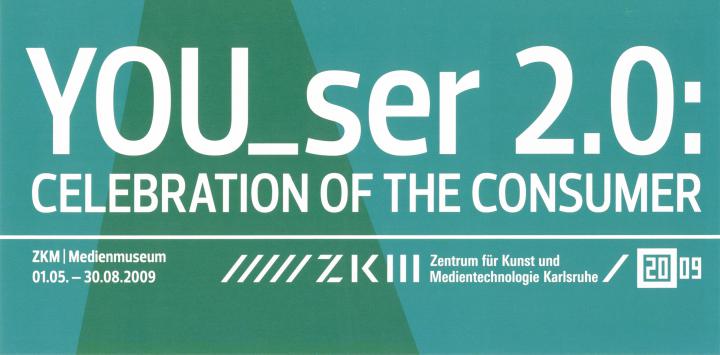
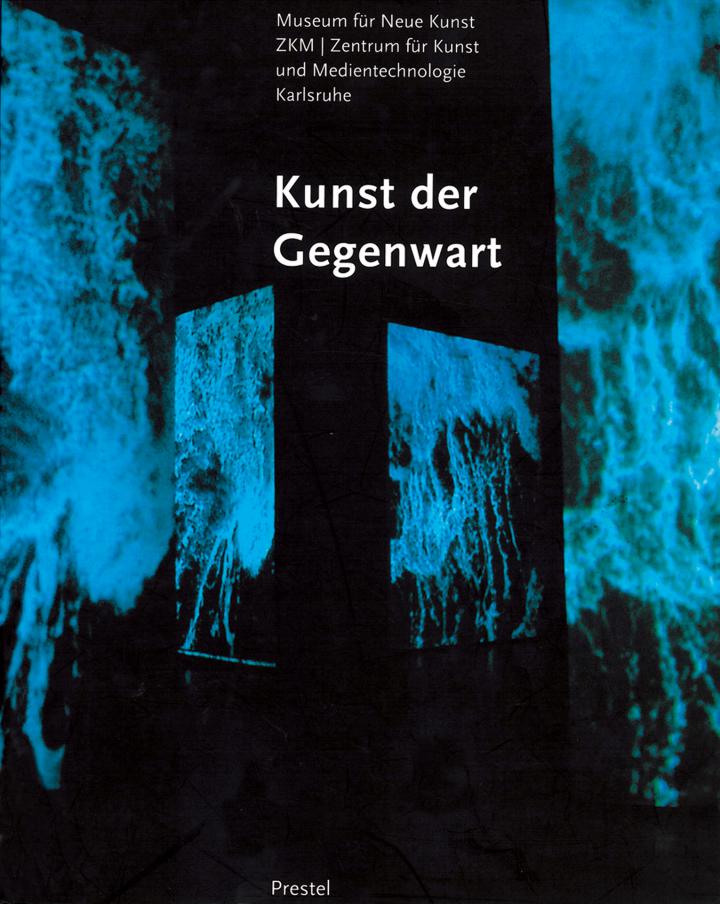
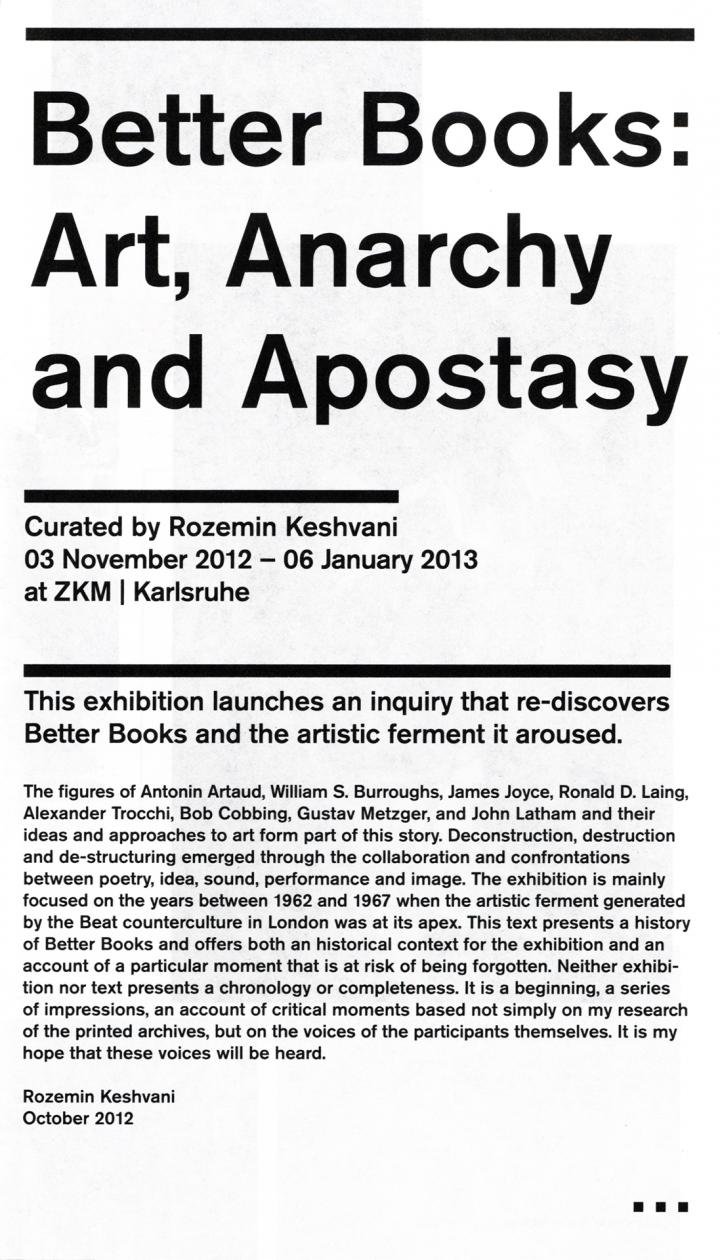
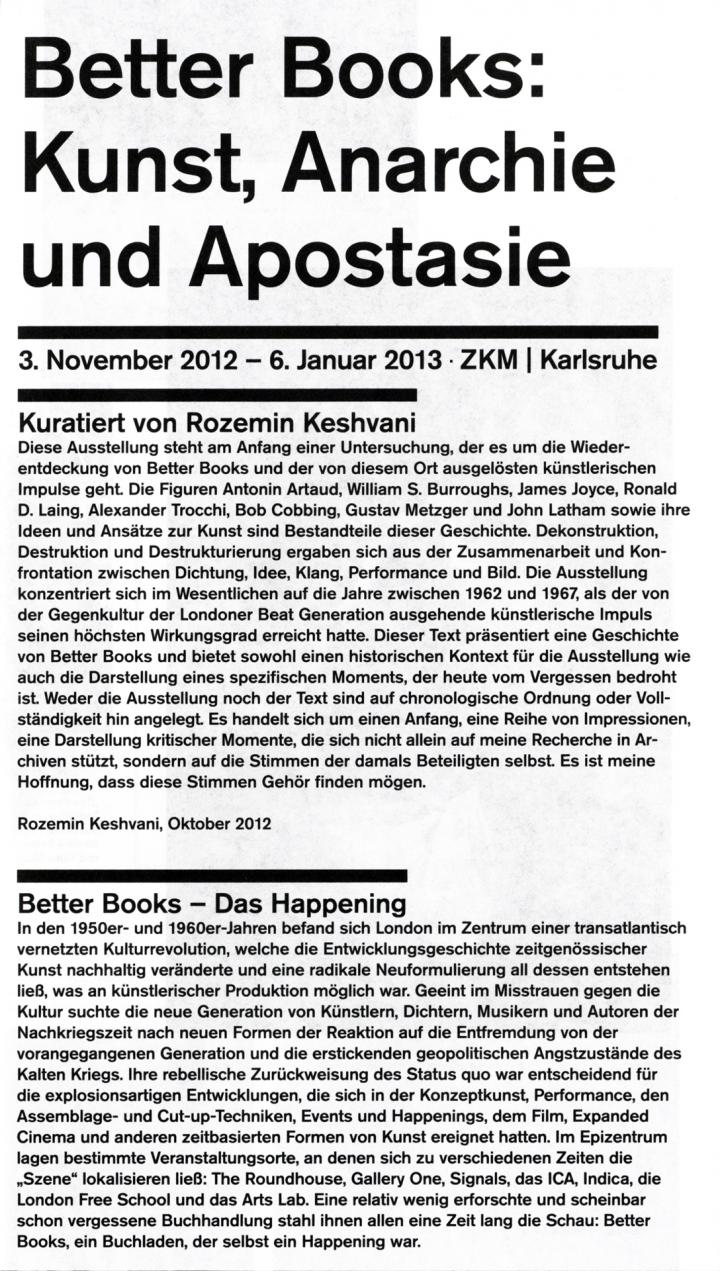

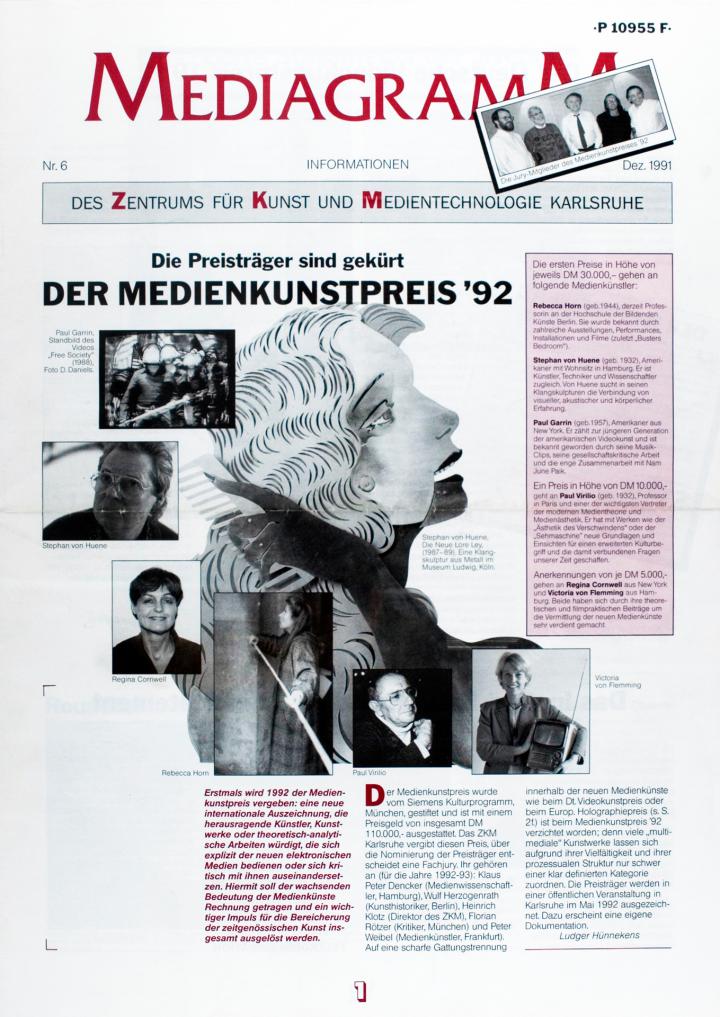
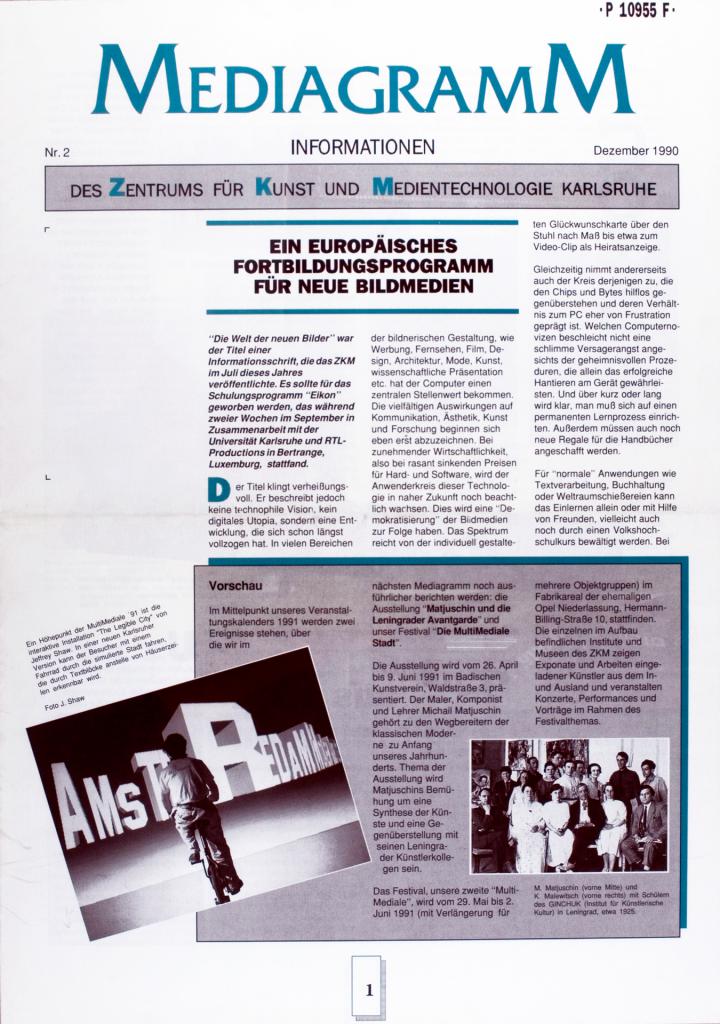
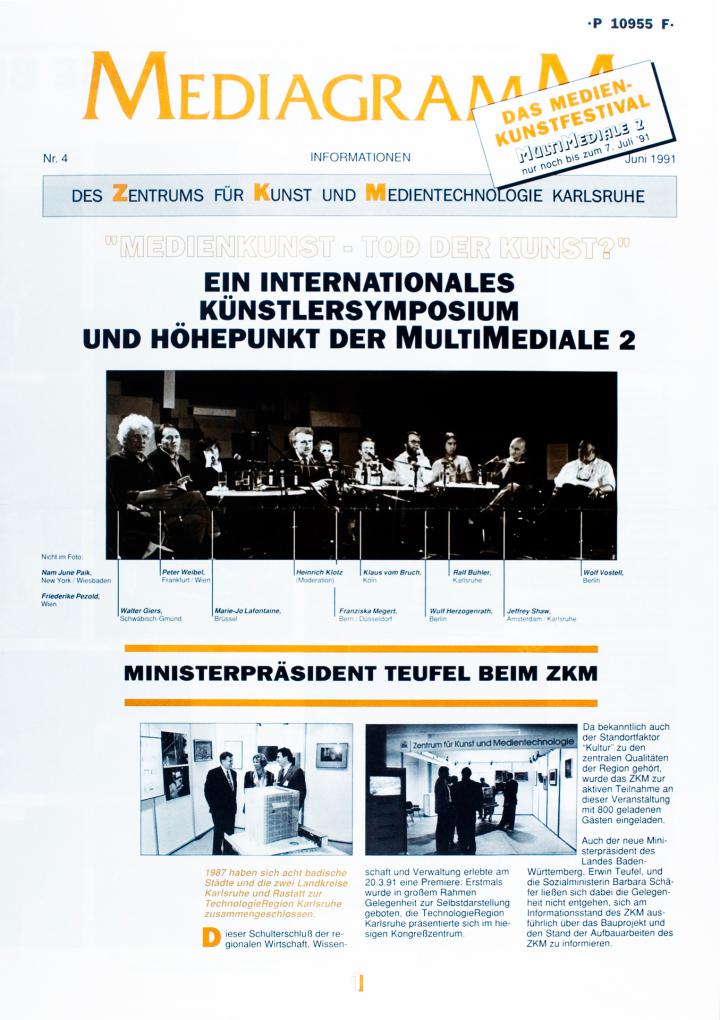
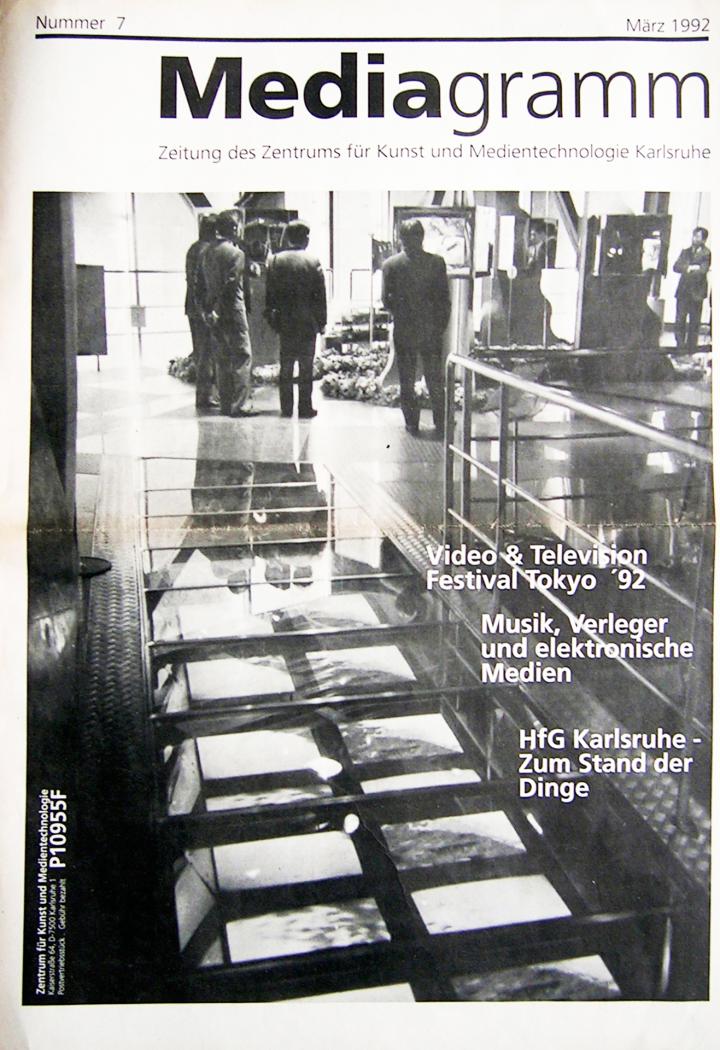
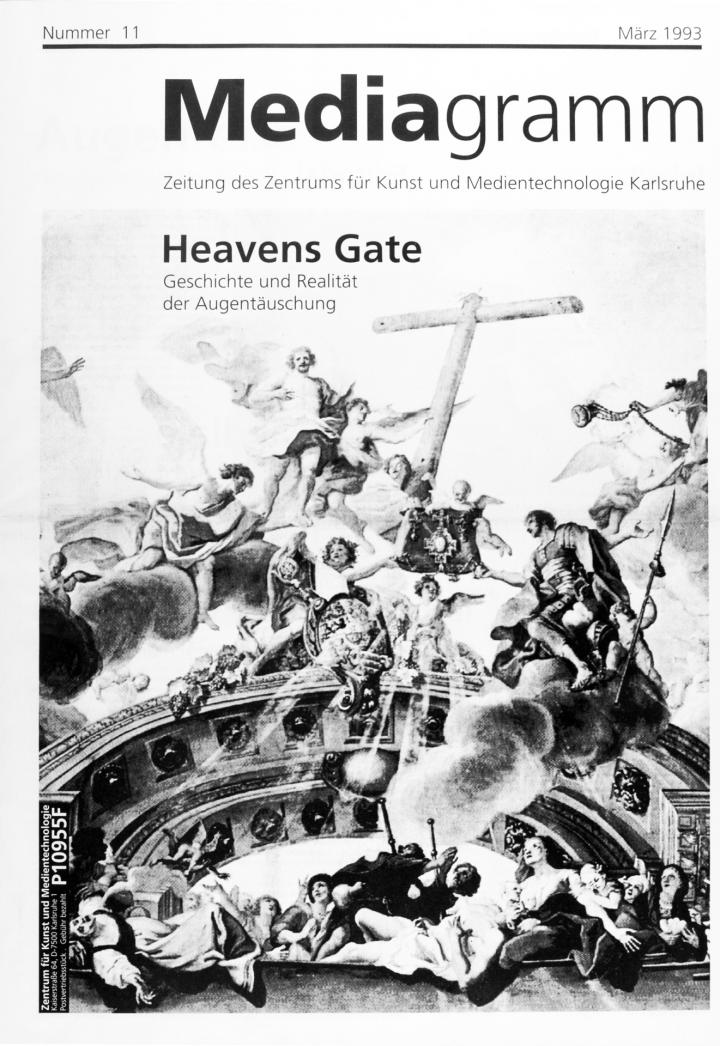
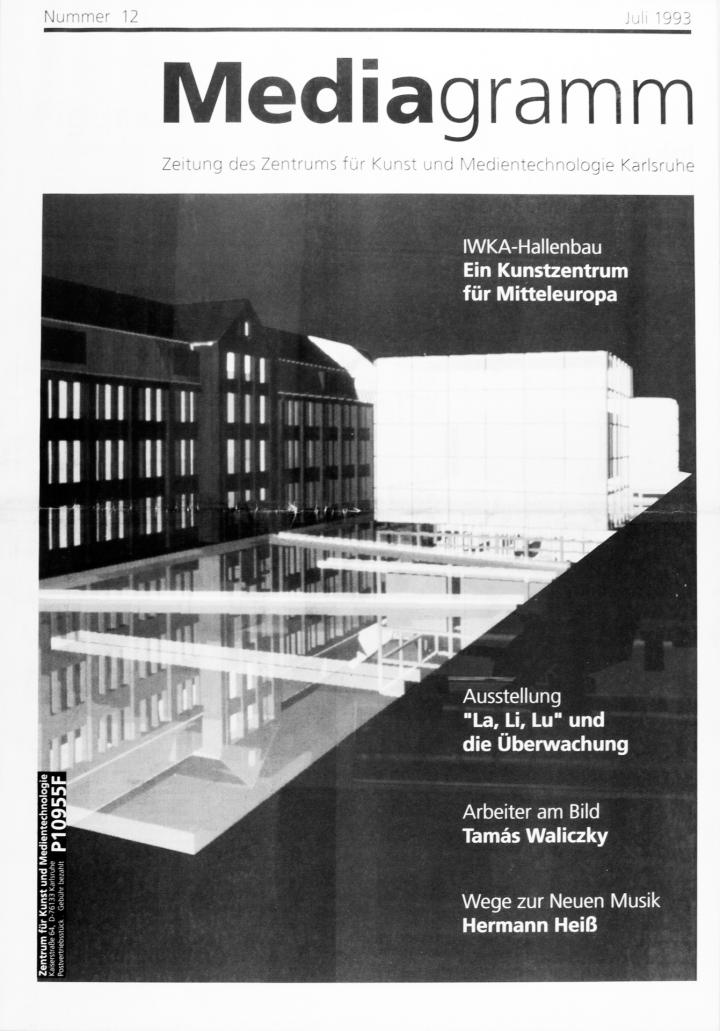
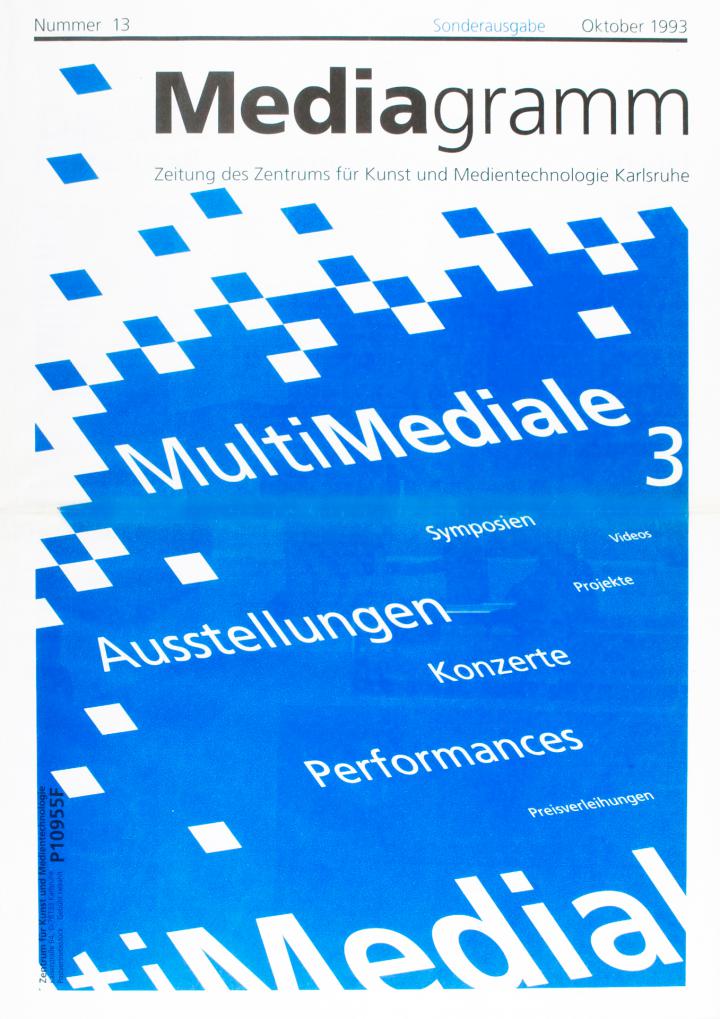
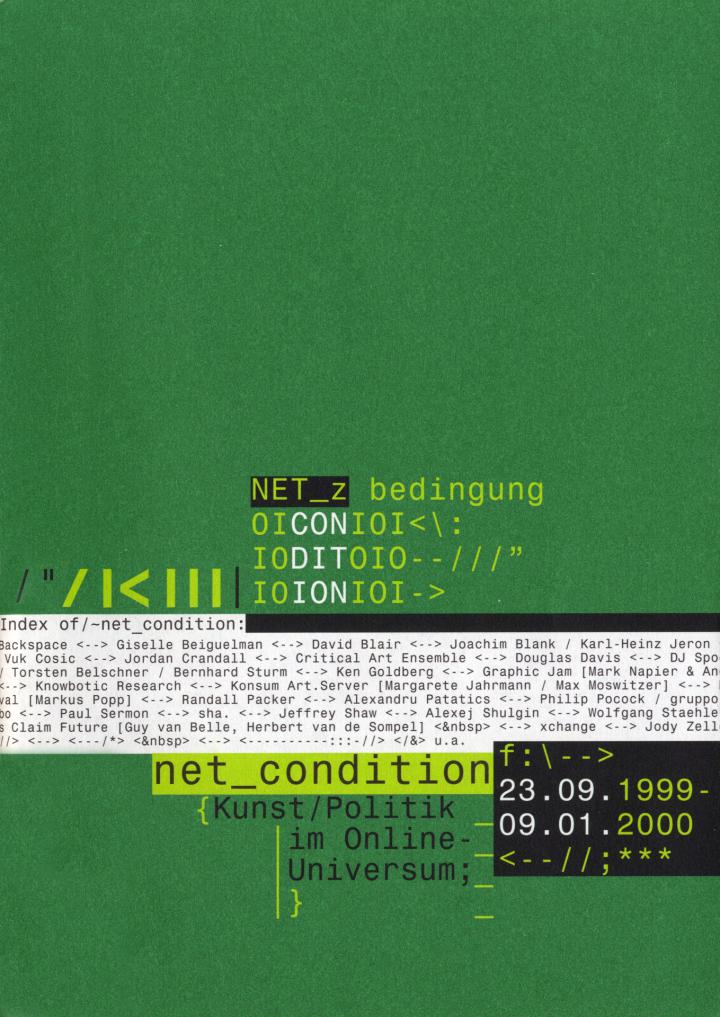
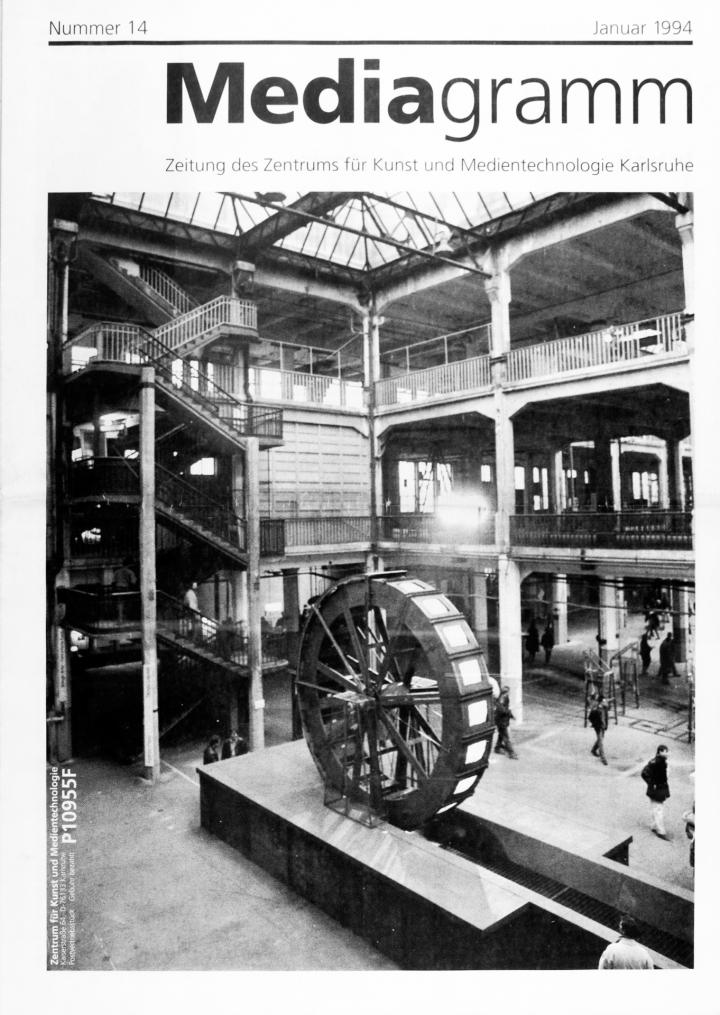
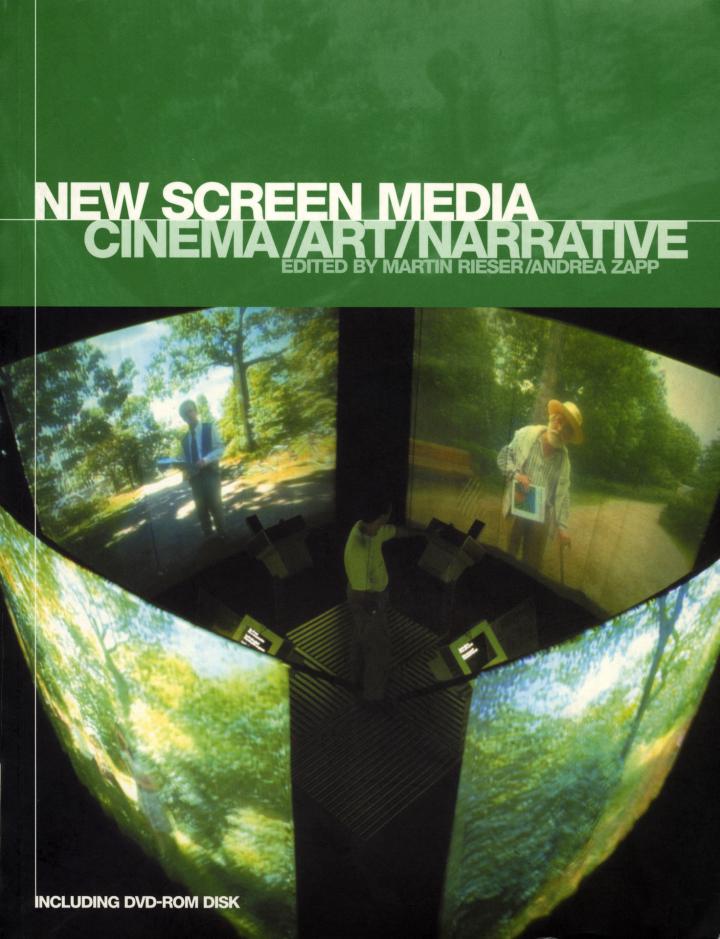
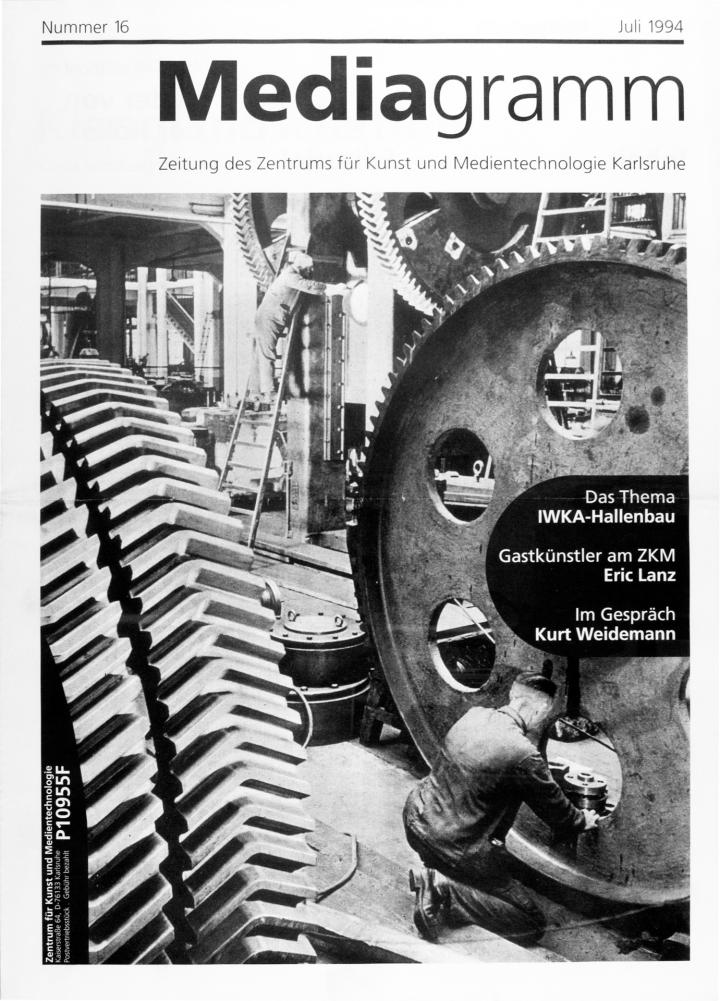
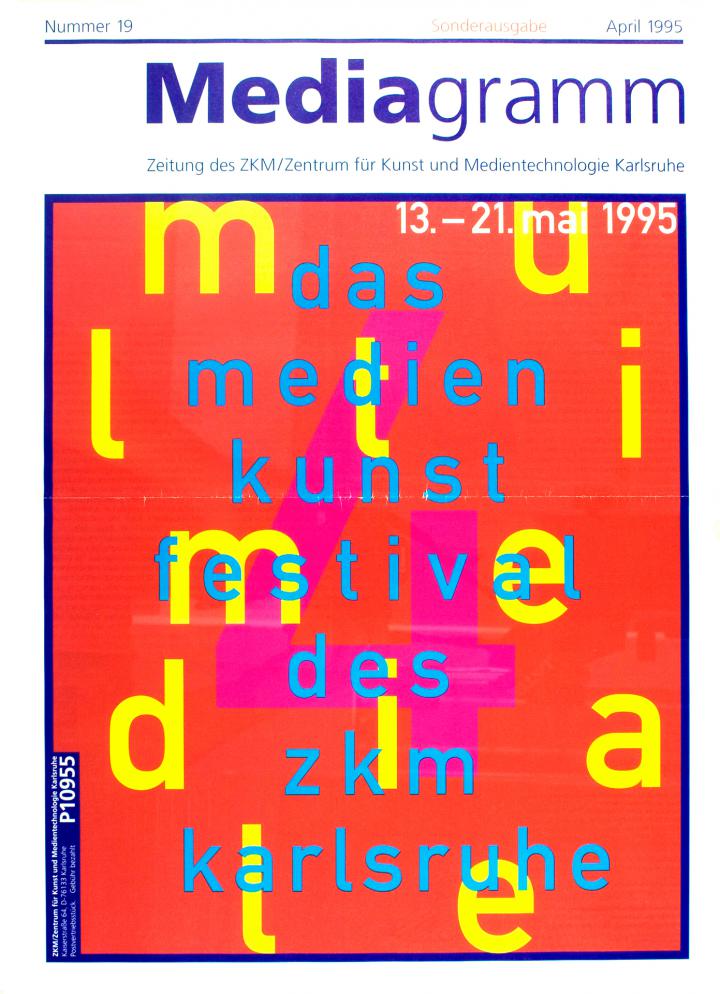
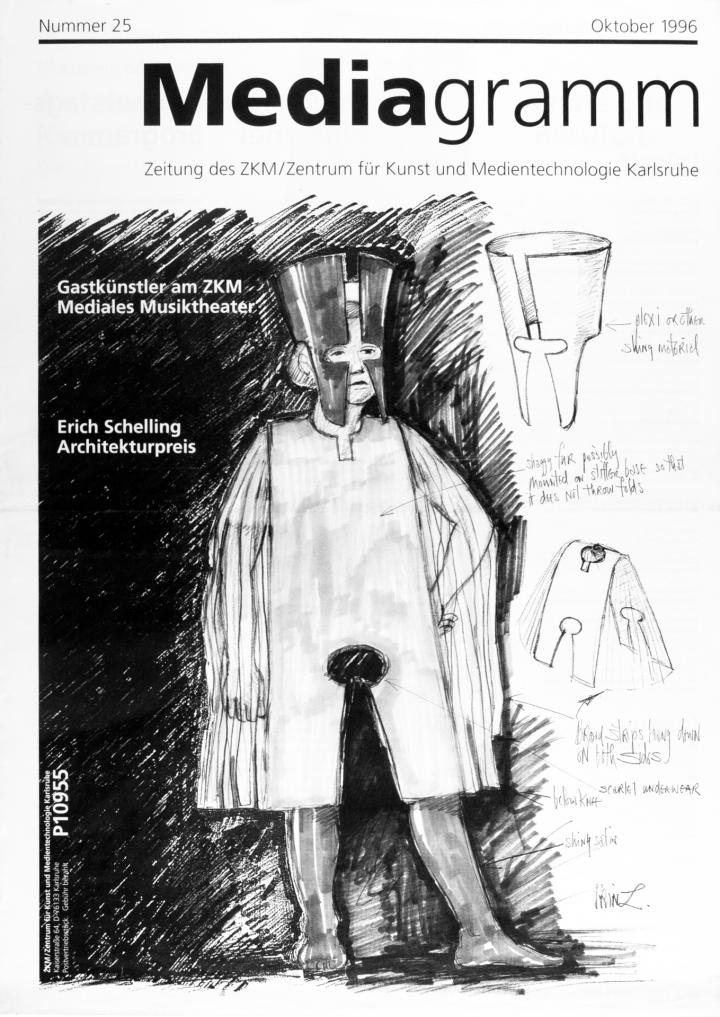
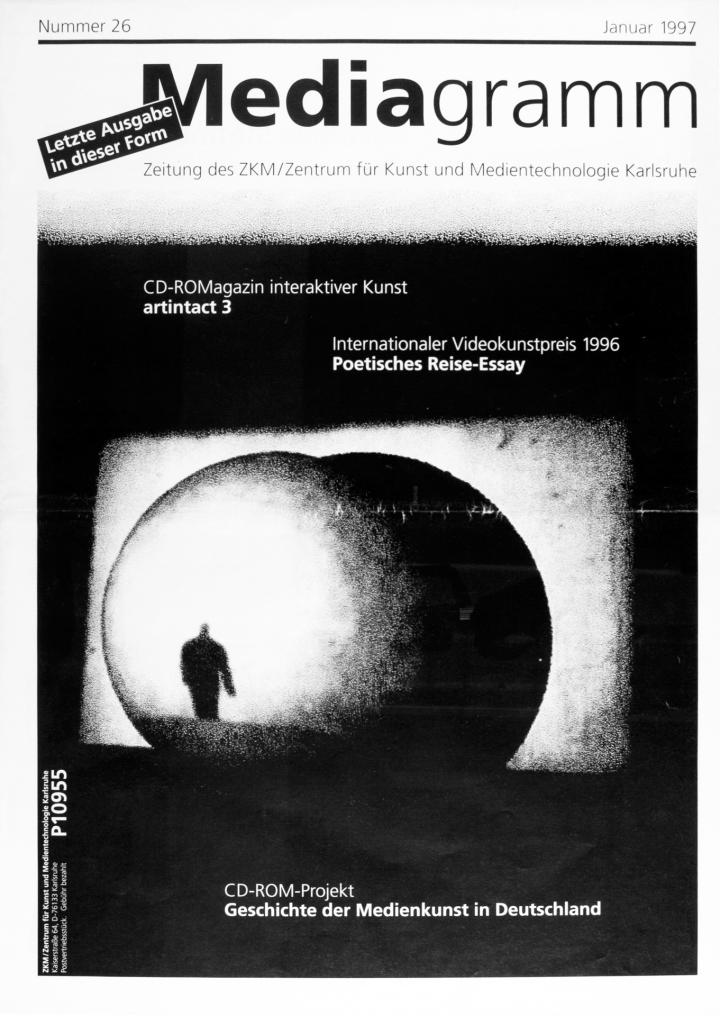
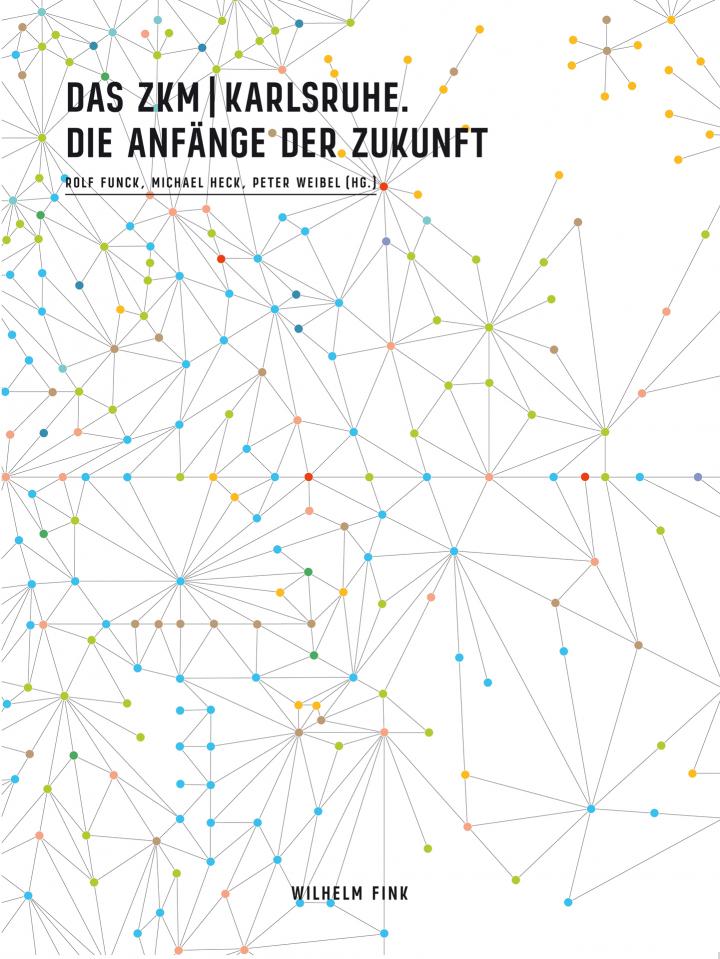
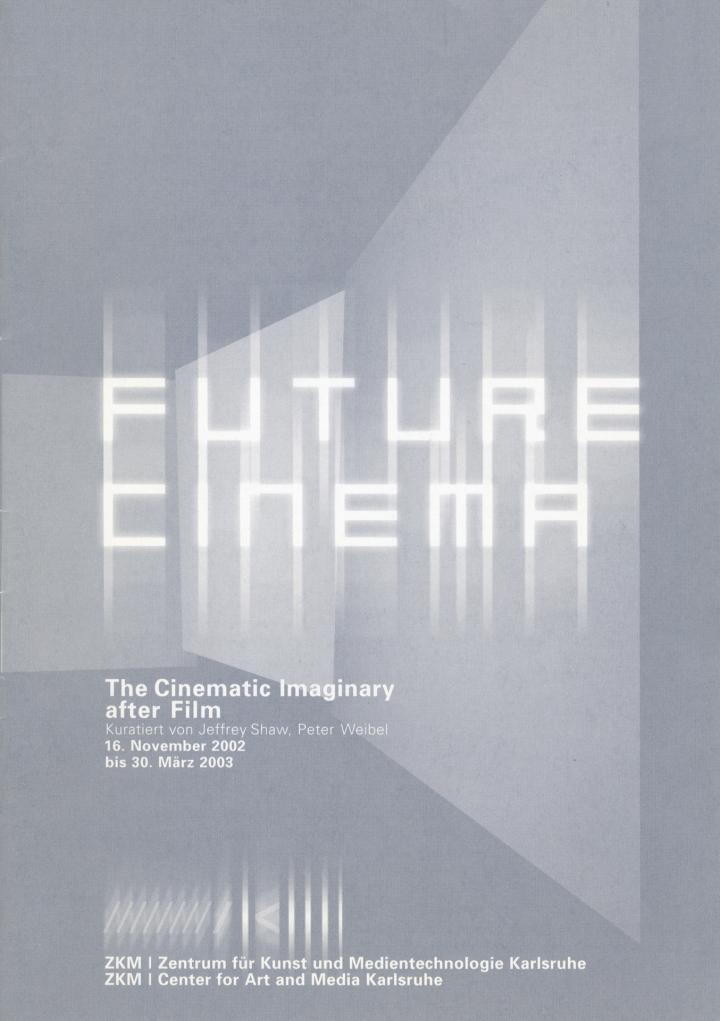
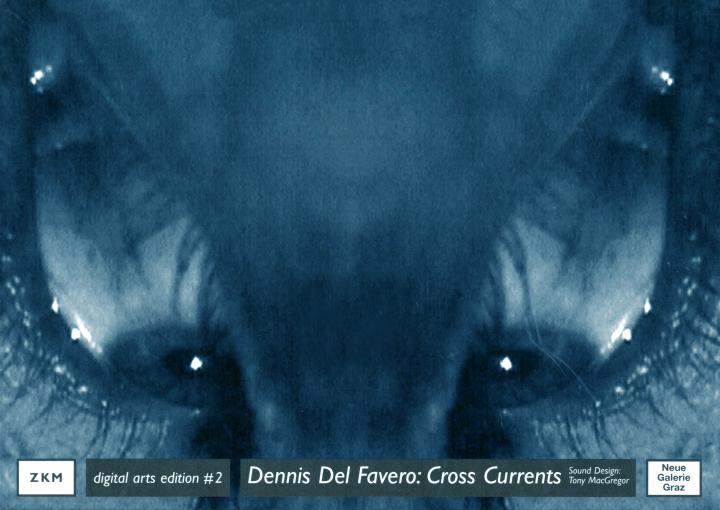

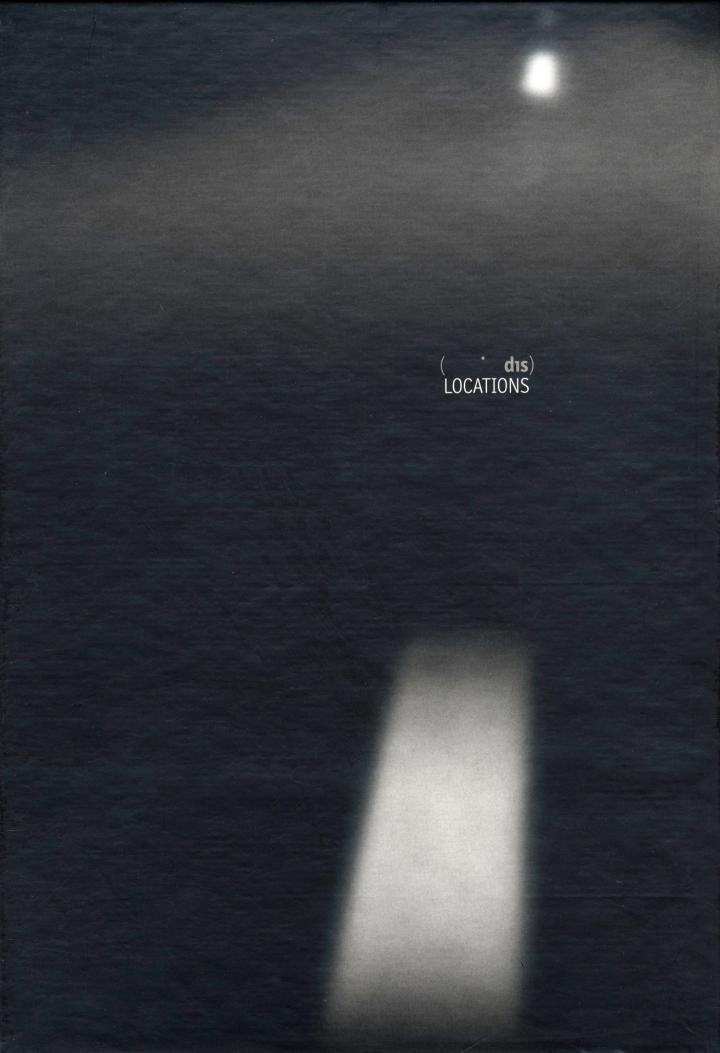
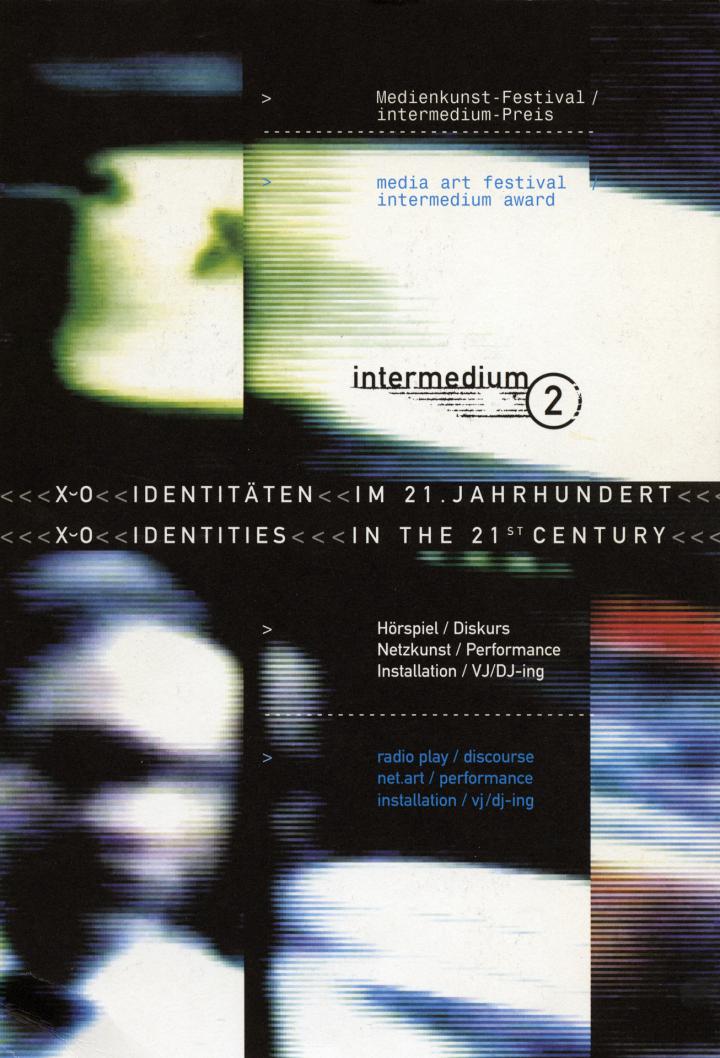
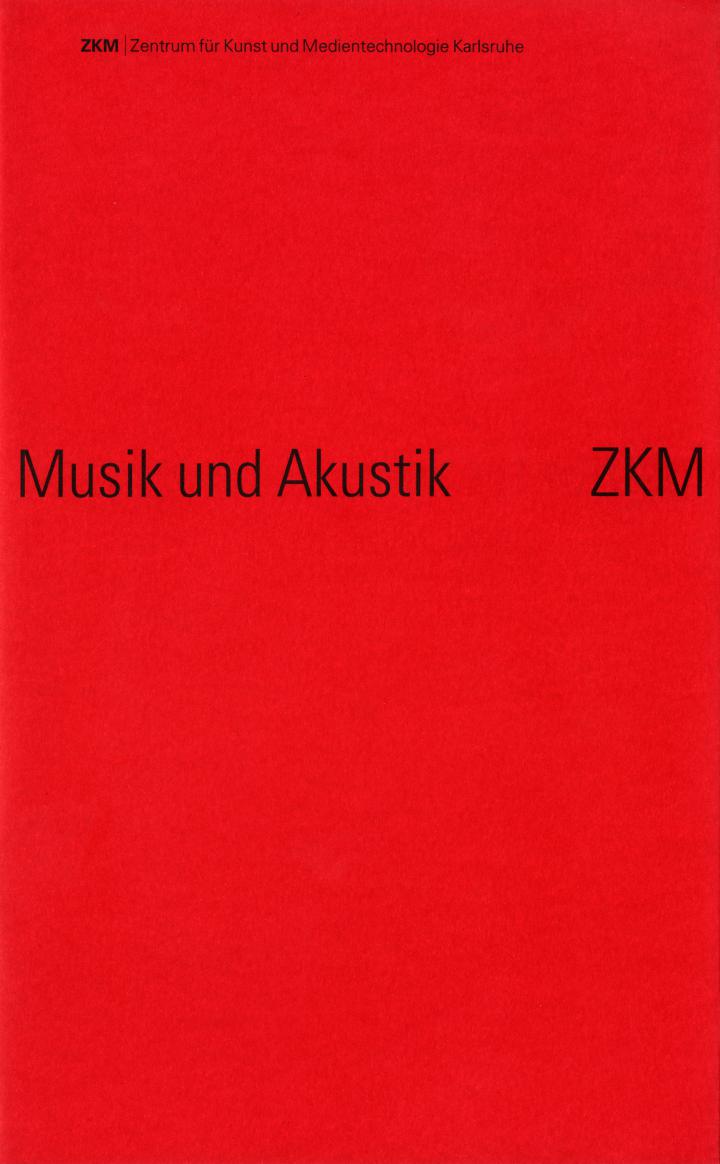
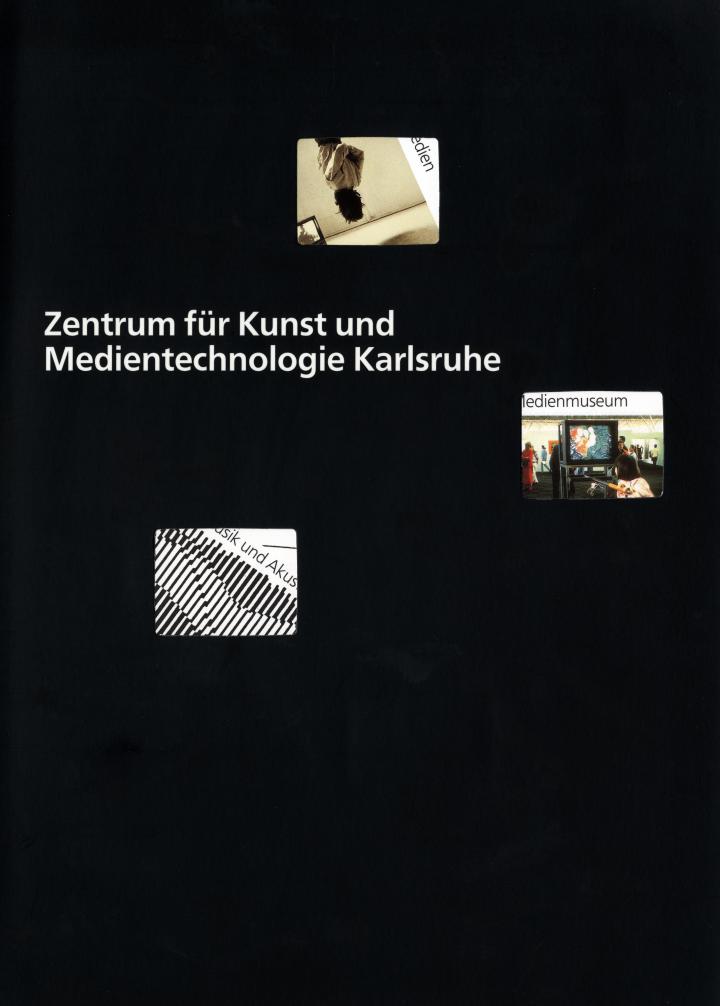
![»Inter[in]vention«, Fundaçâo Eugénio de Almeida, 2013 / © Fundaçâo Eugénio de Almeida Blue cover with white writing.](https://zkm.de/sites/default/files/styles/r17_720_dynamic/public/bild/2013_-_publikation_-_intervention_-_cover_0.jpg?itok=6WYxarwb)
